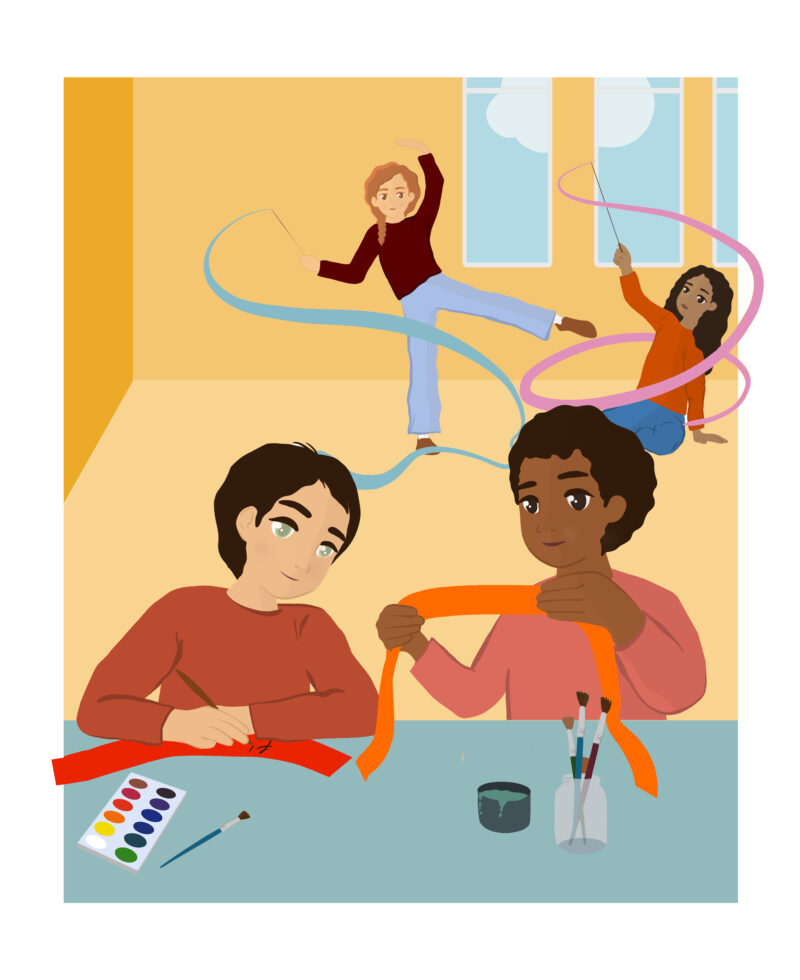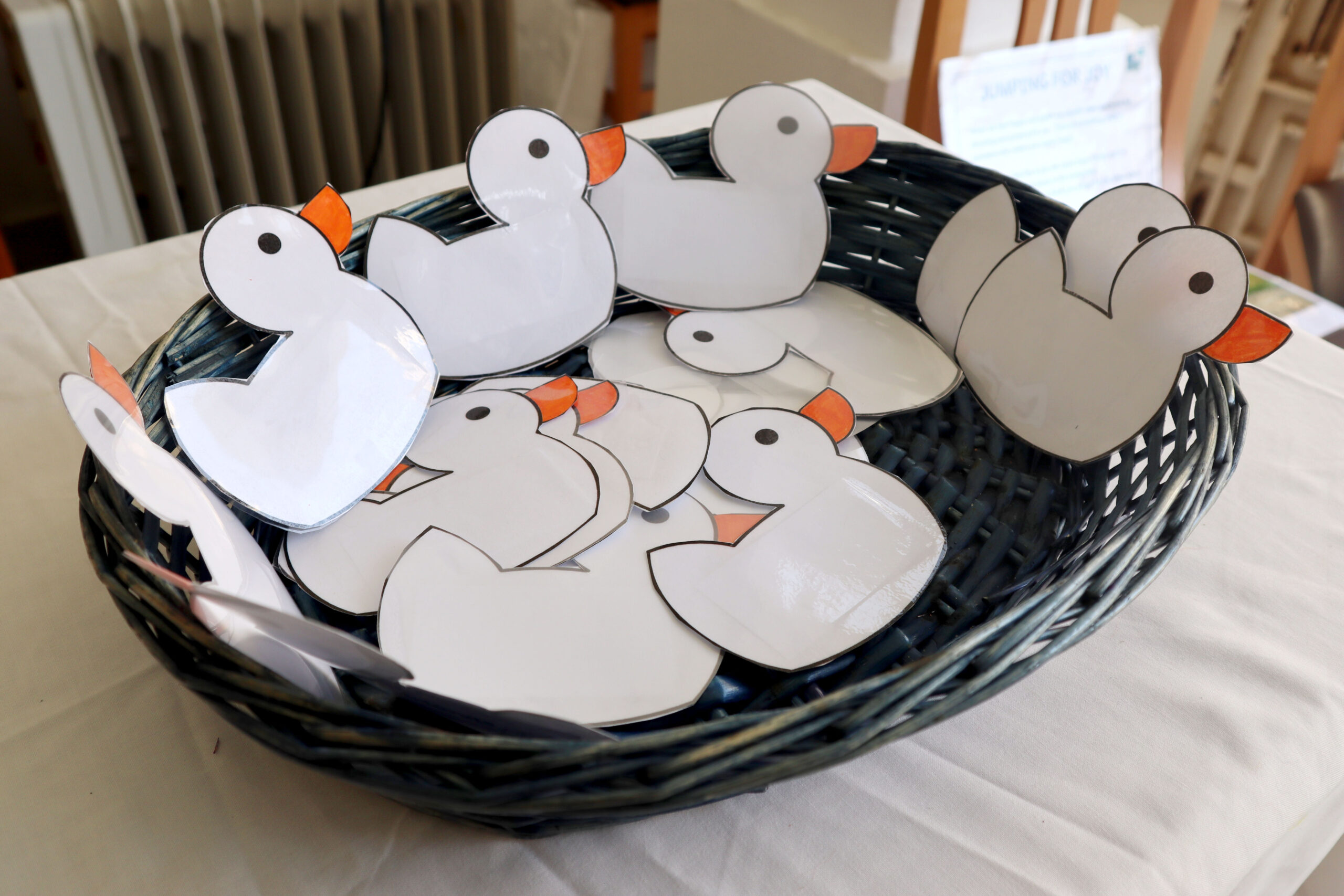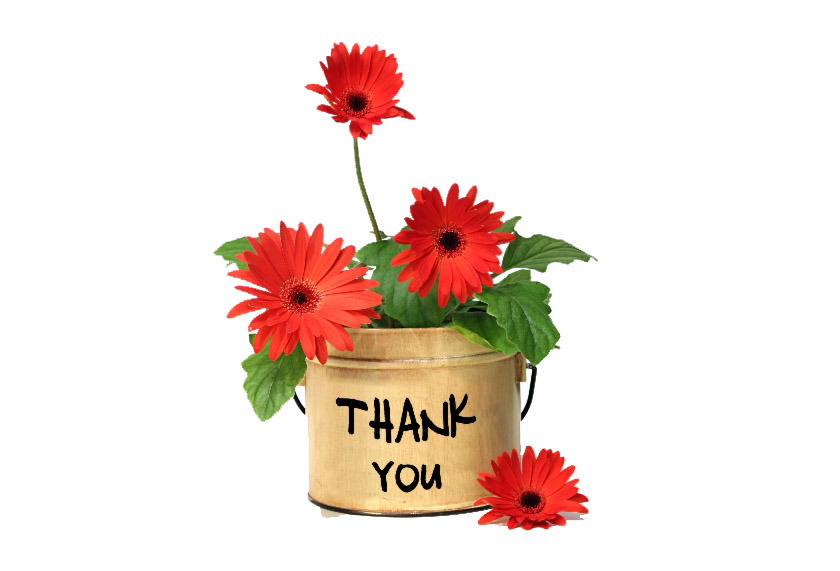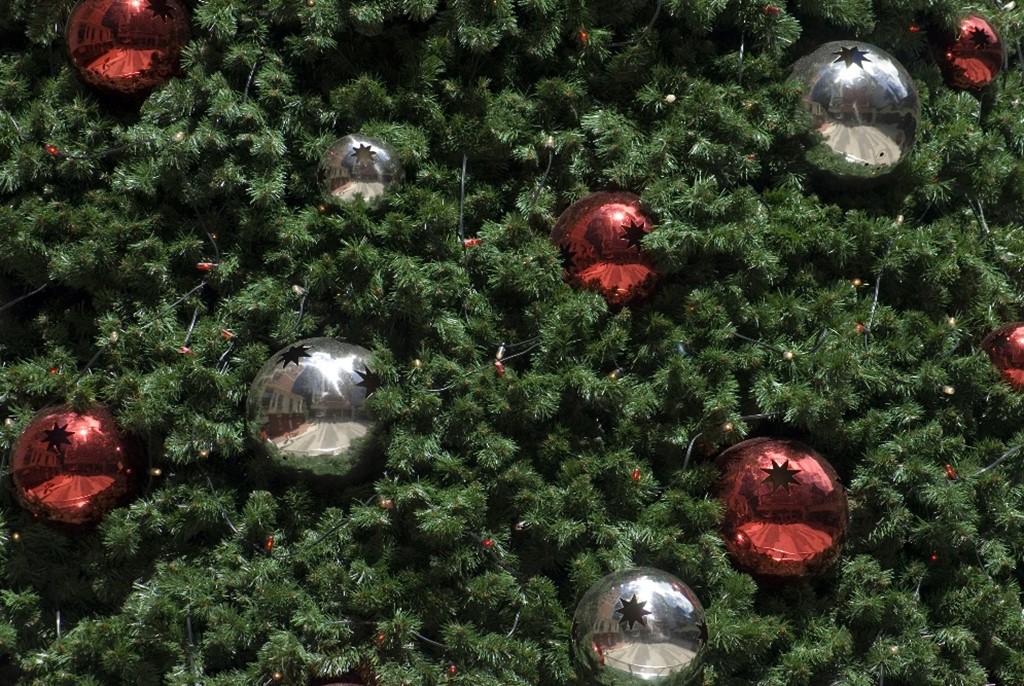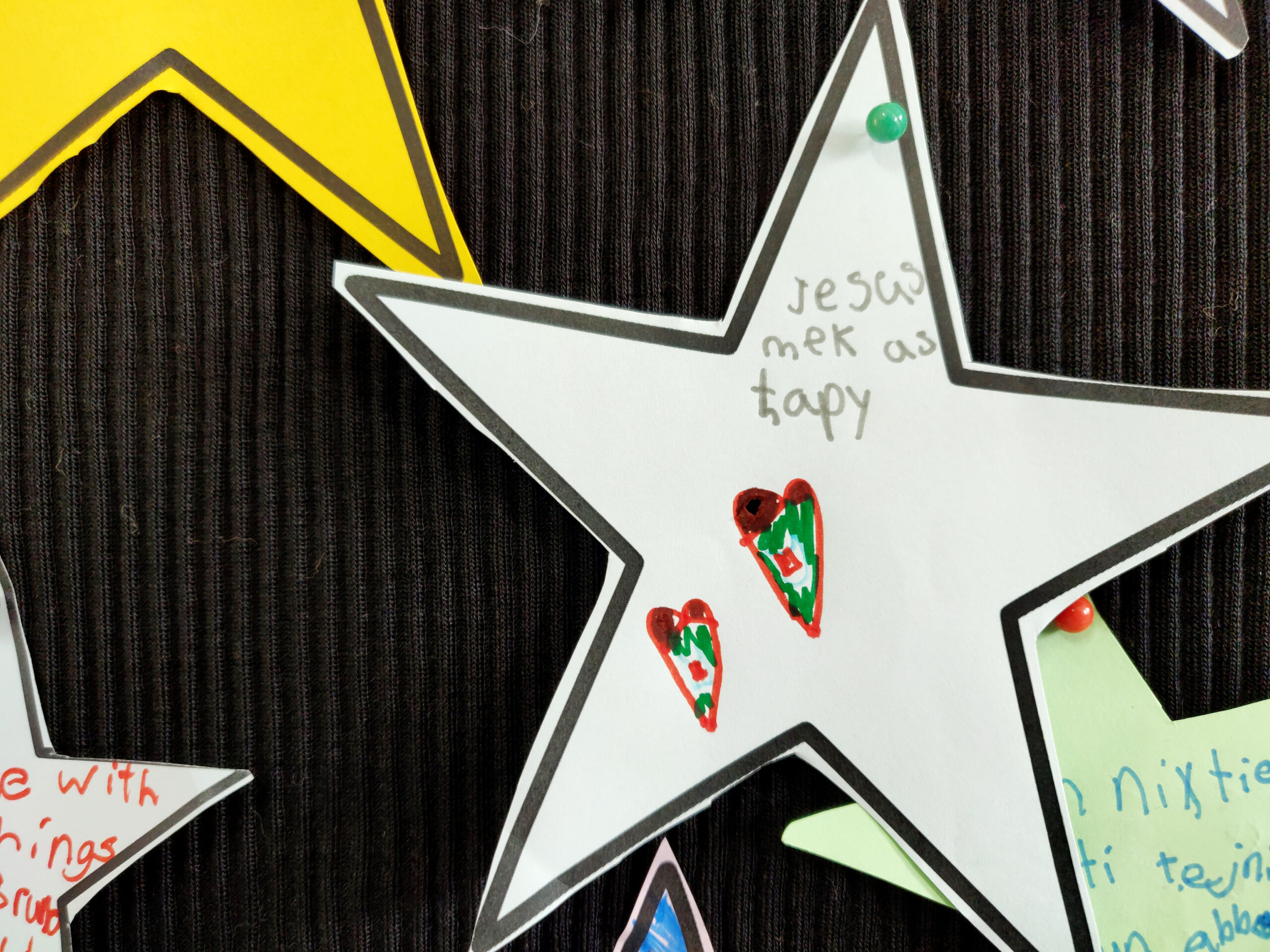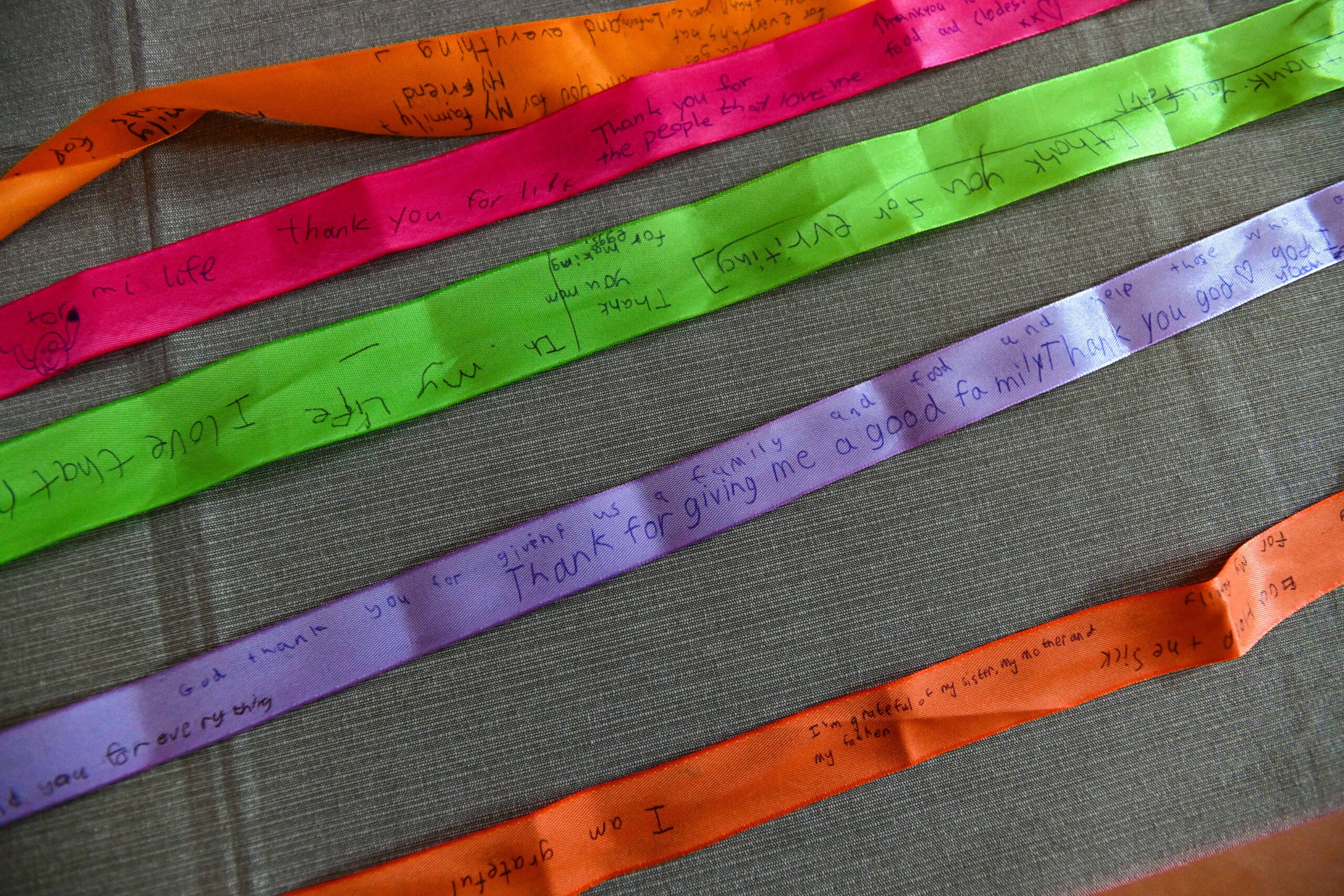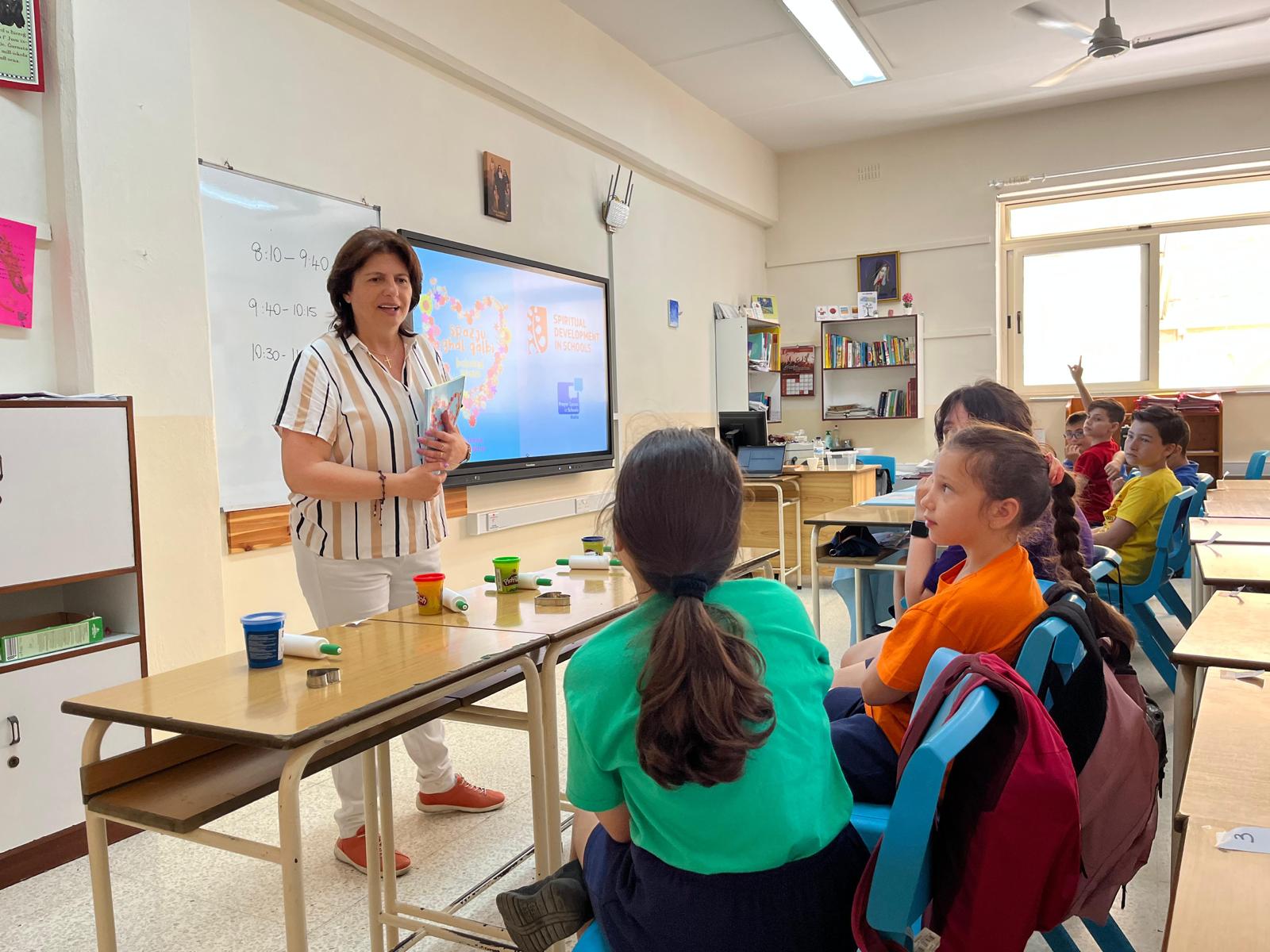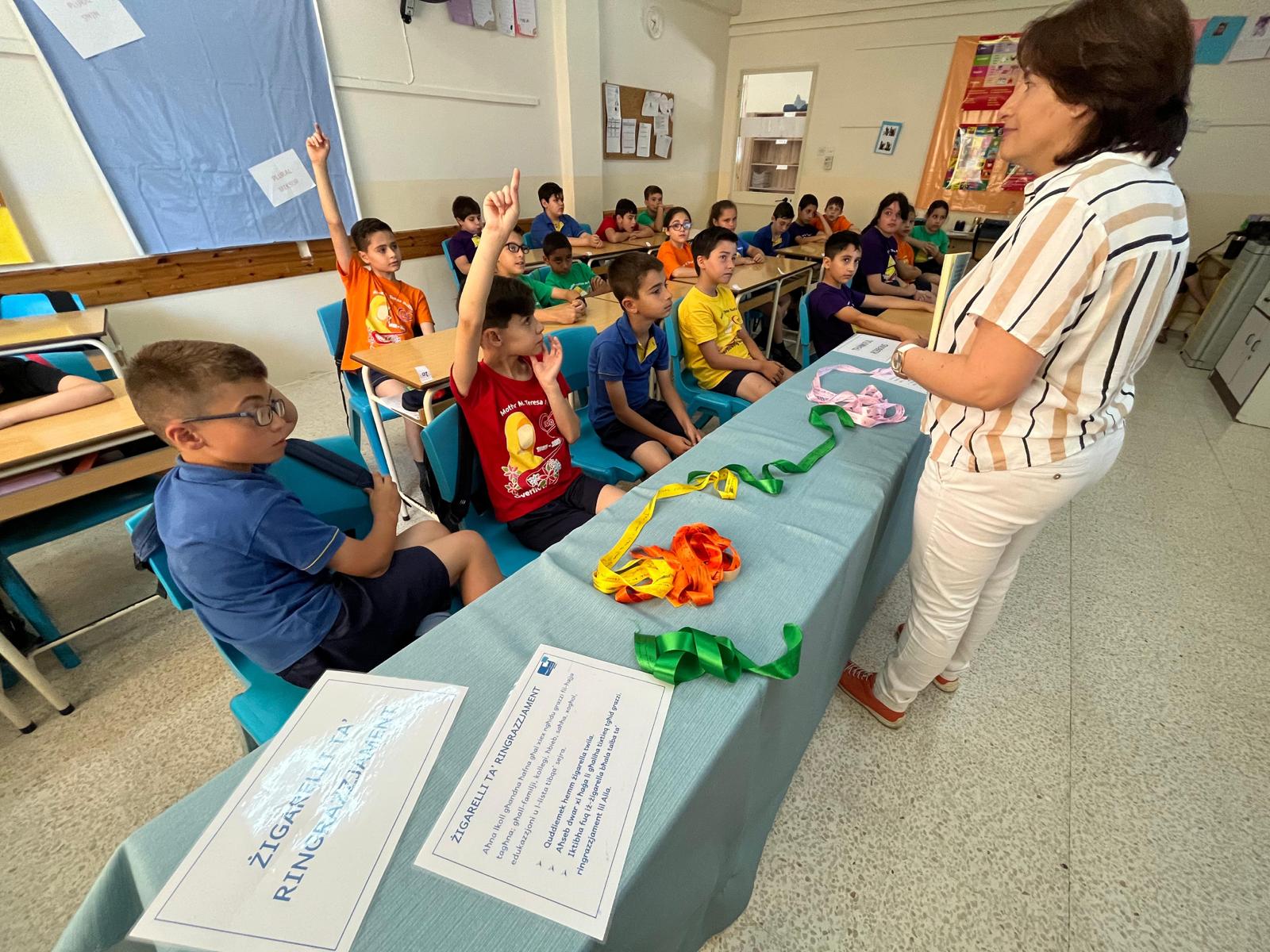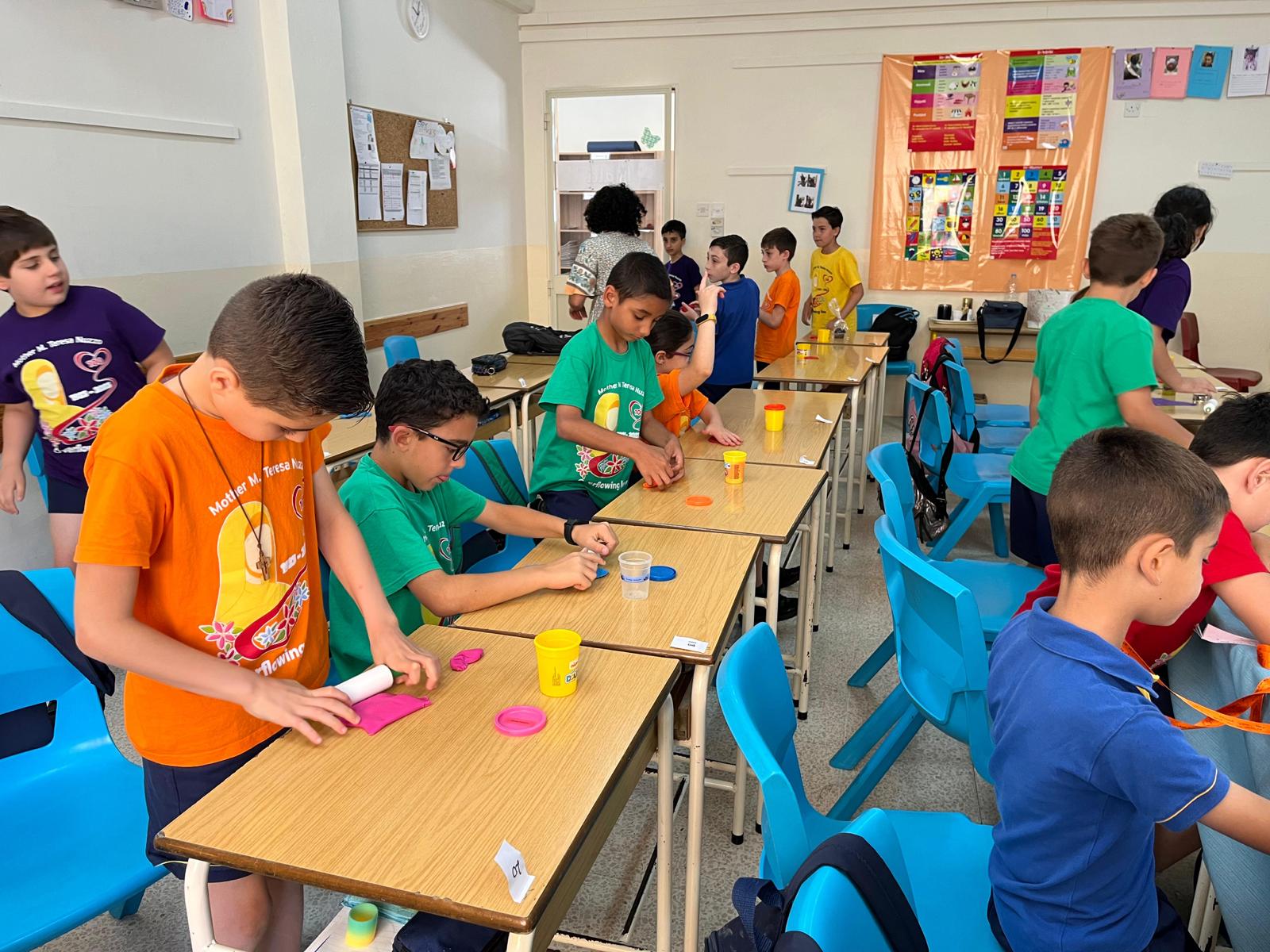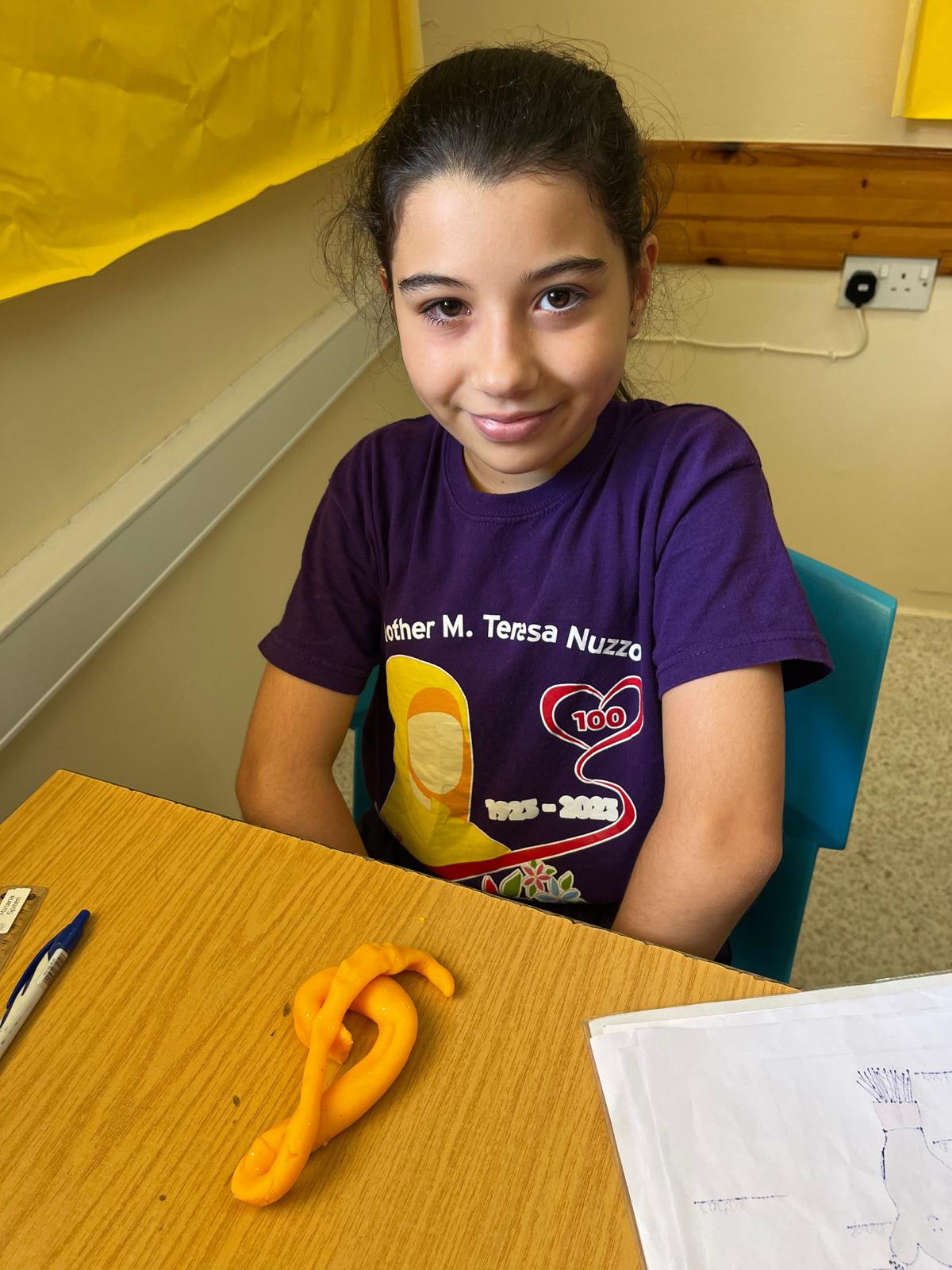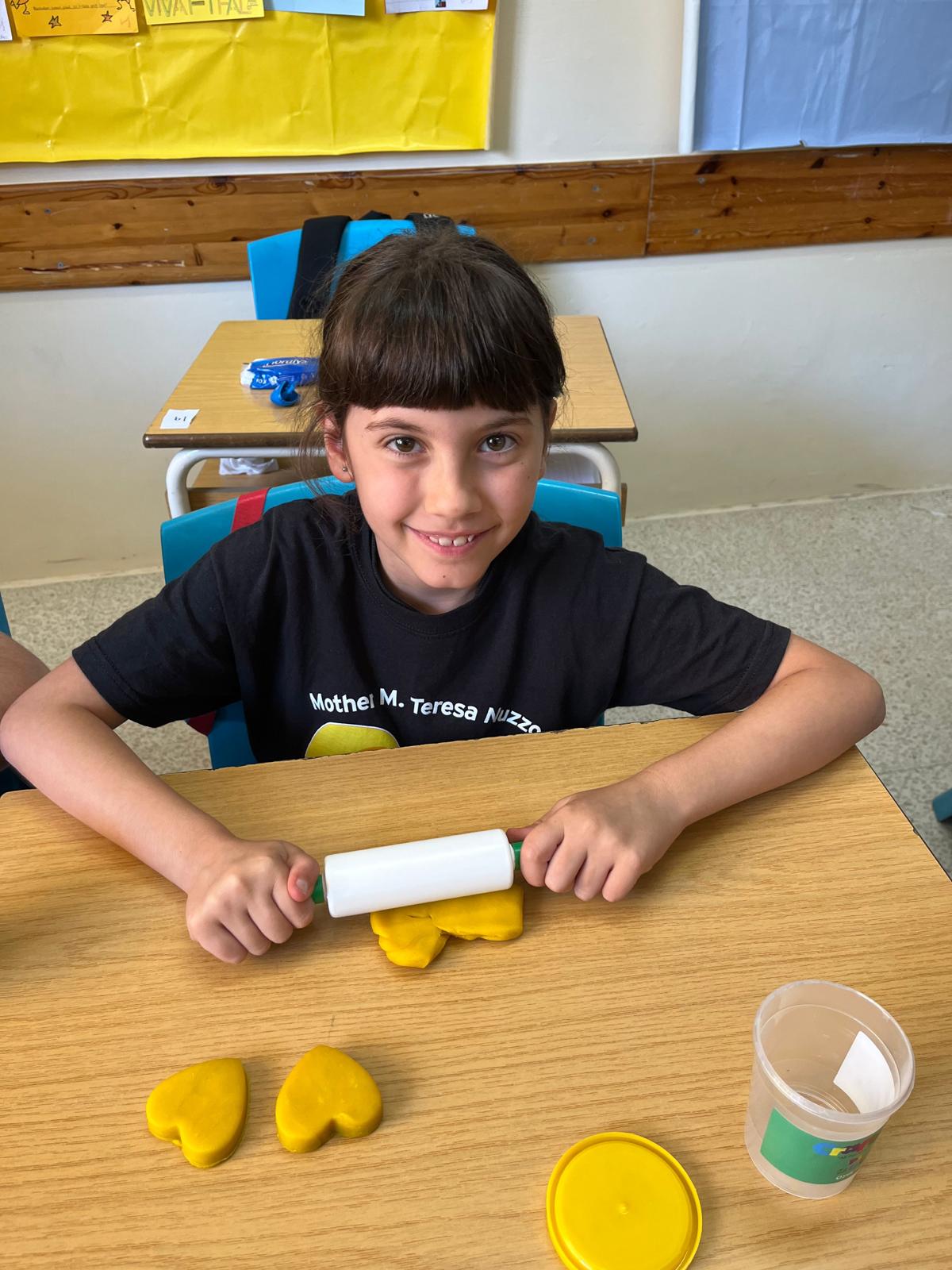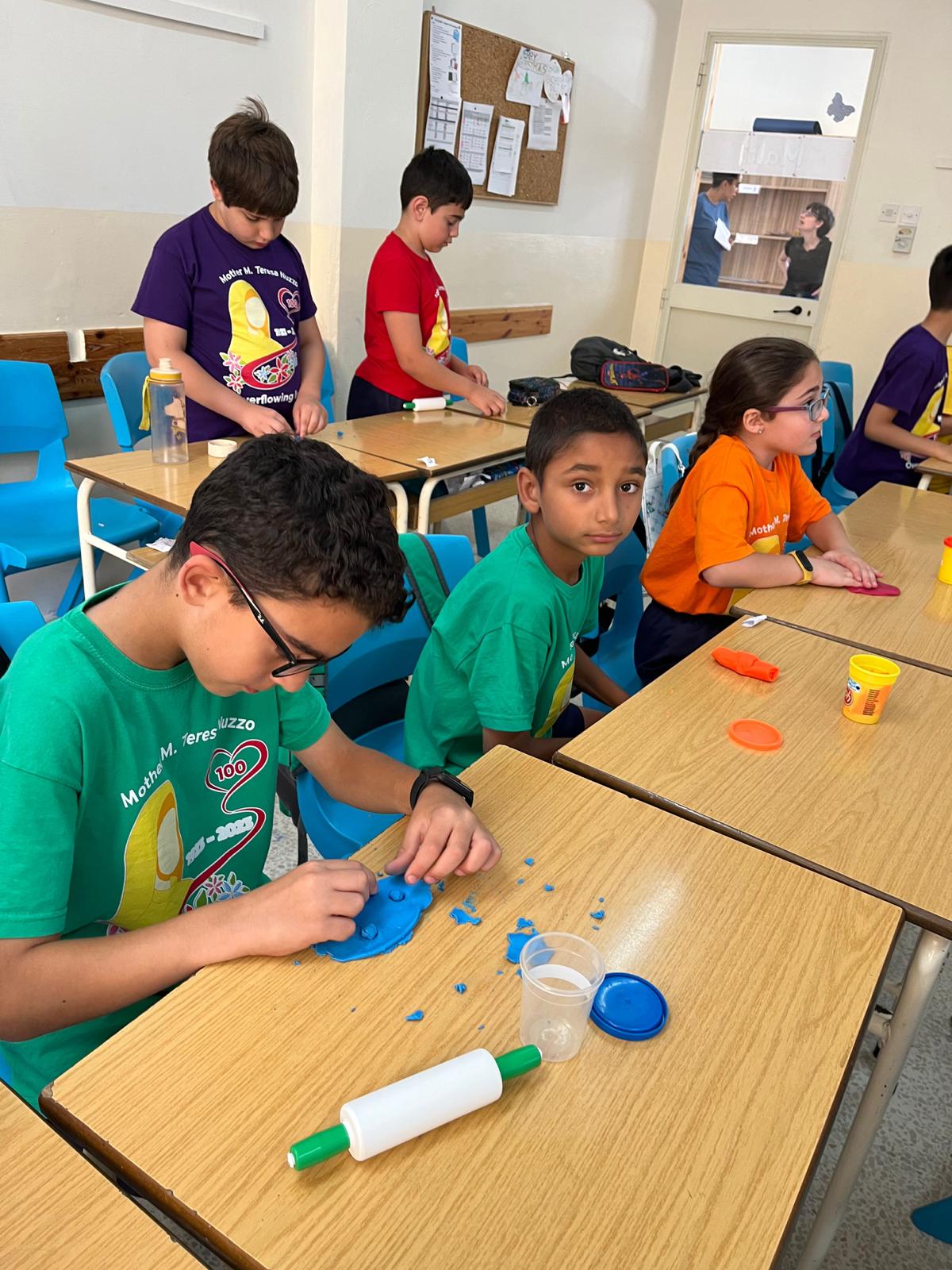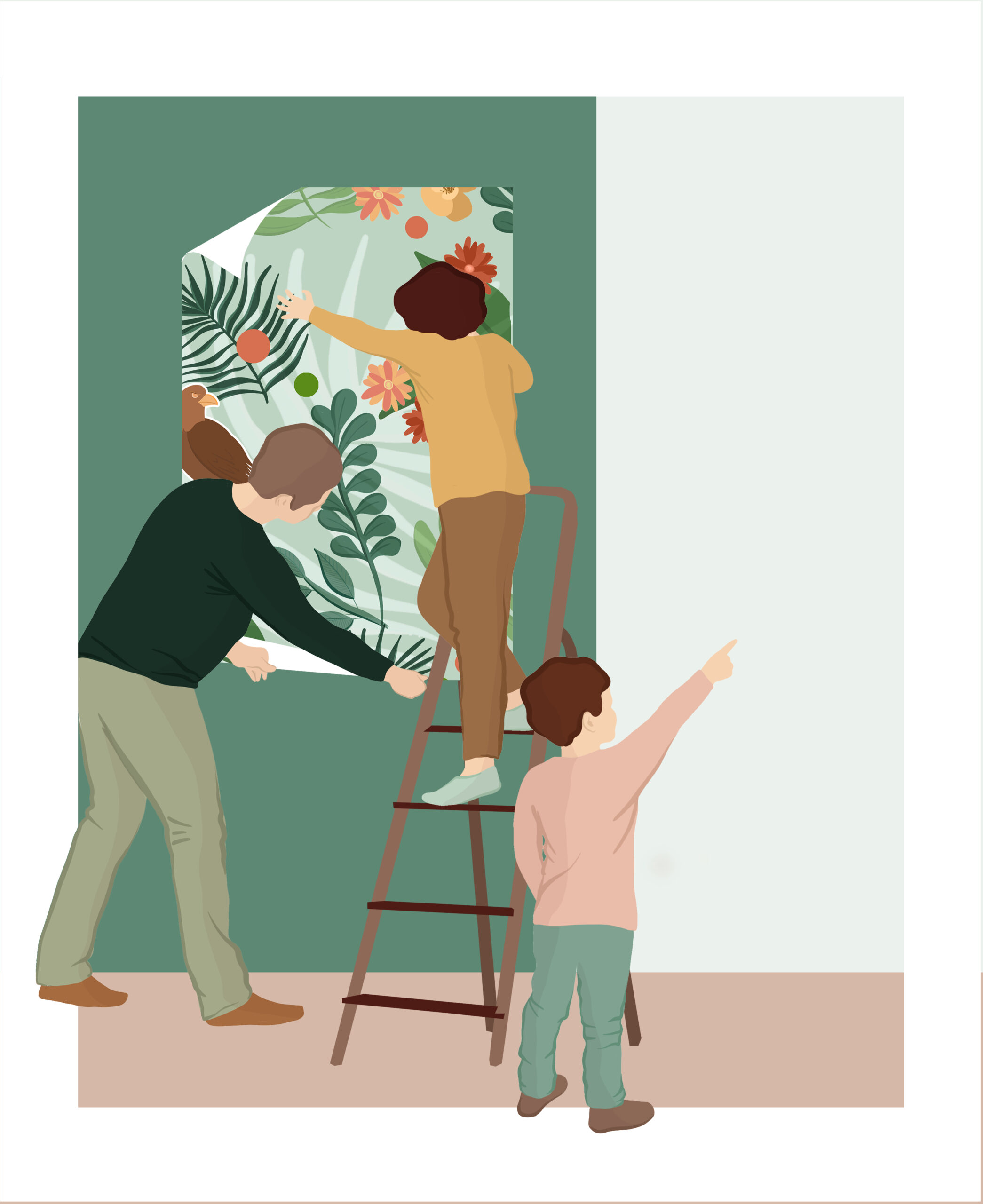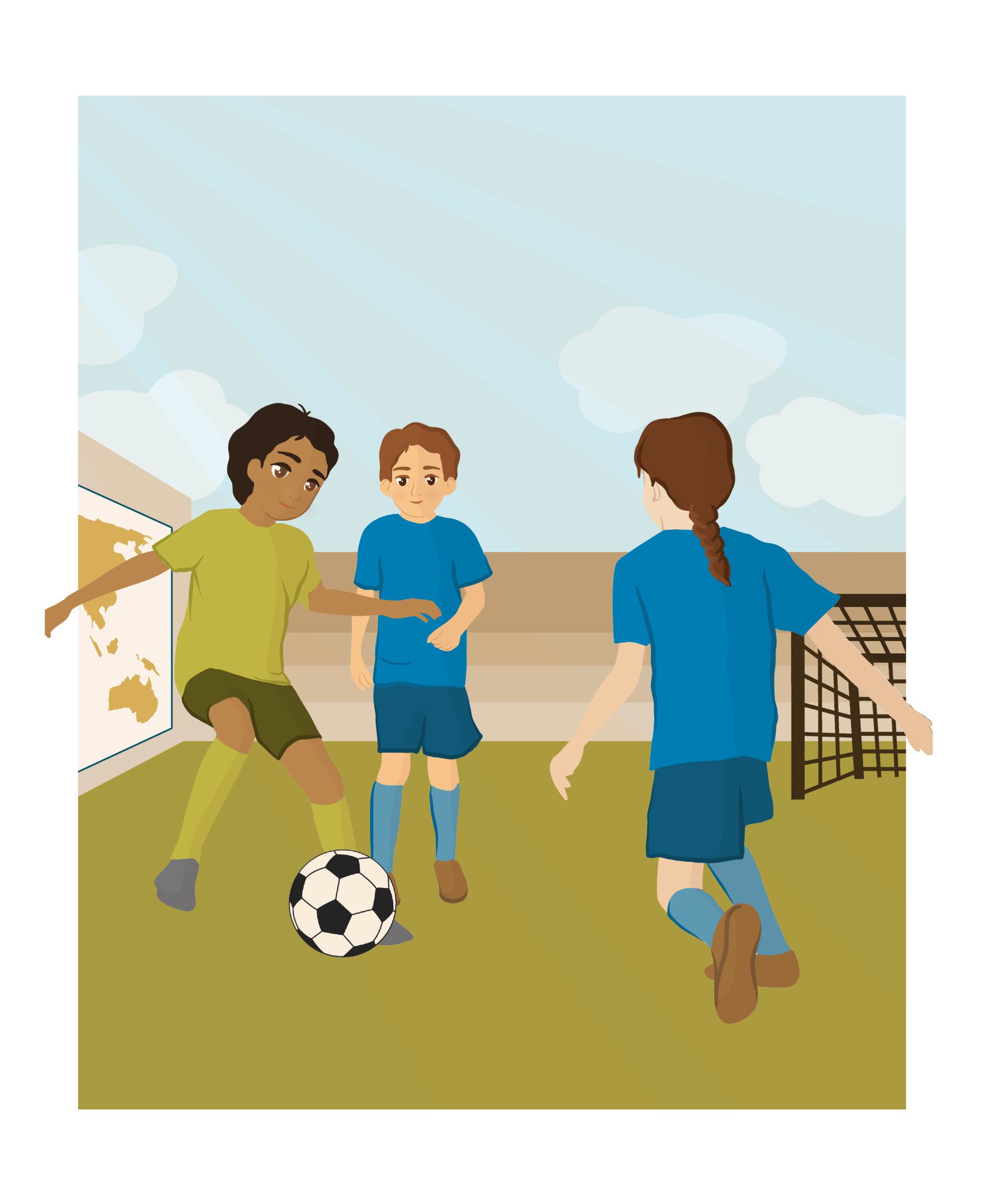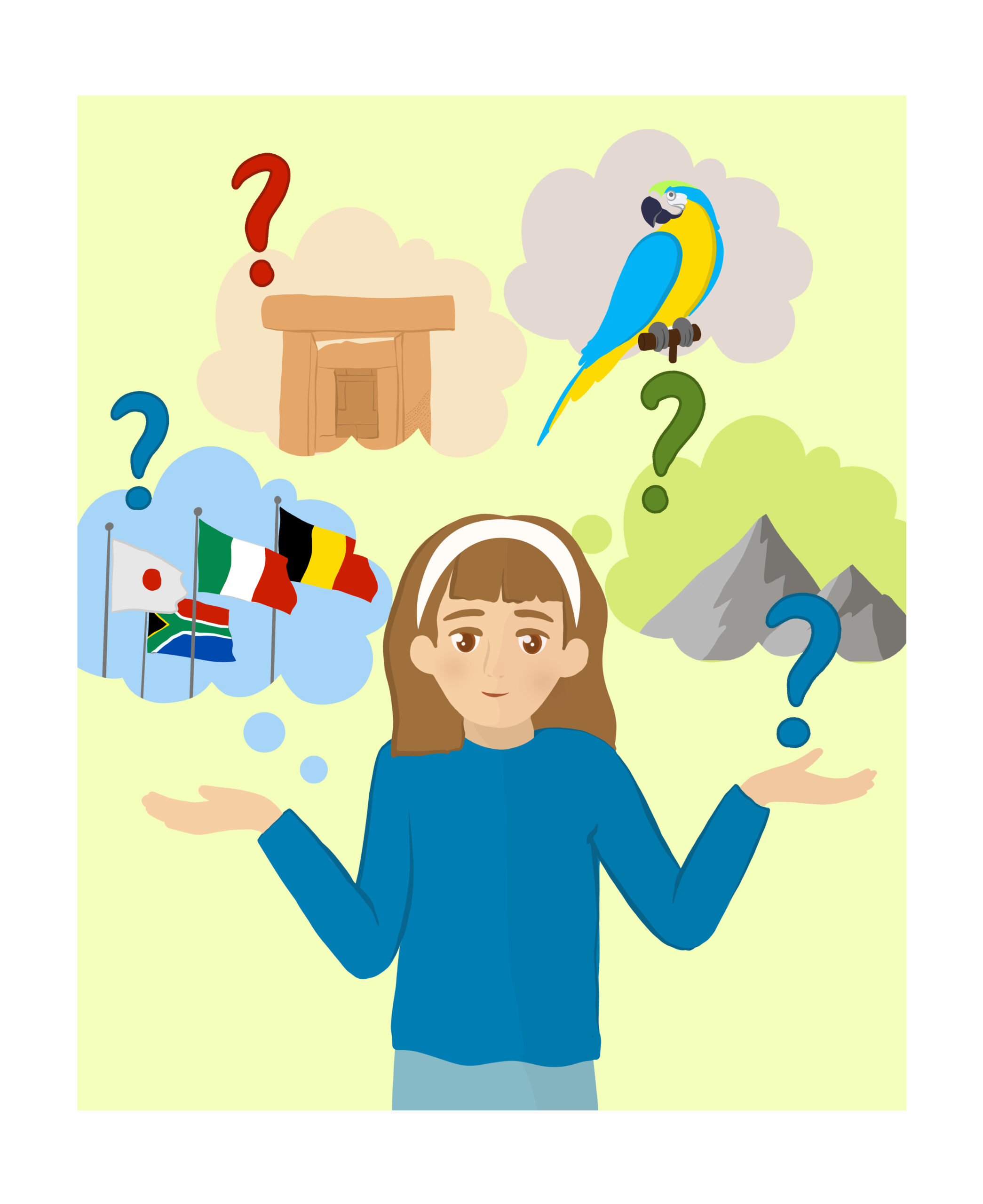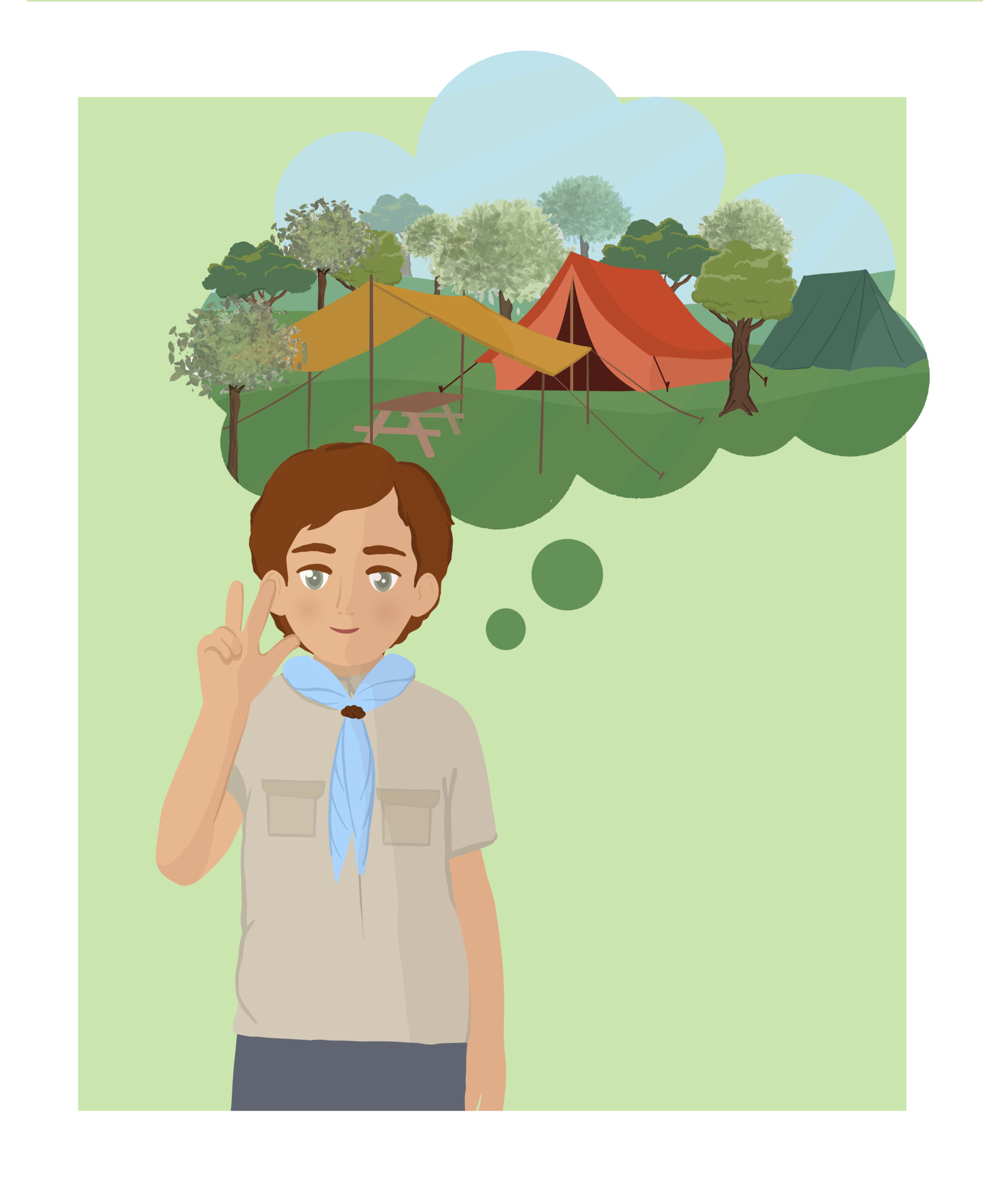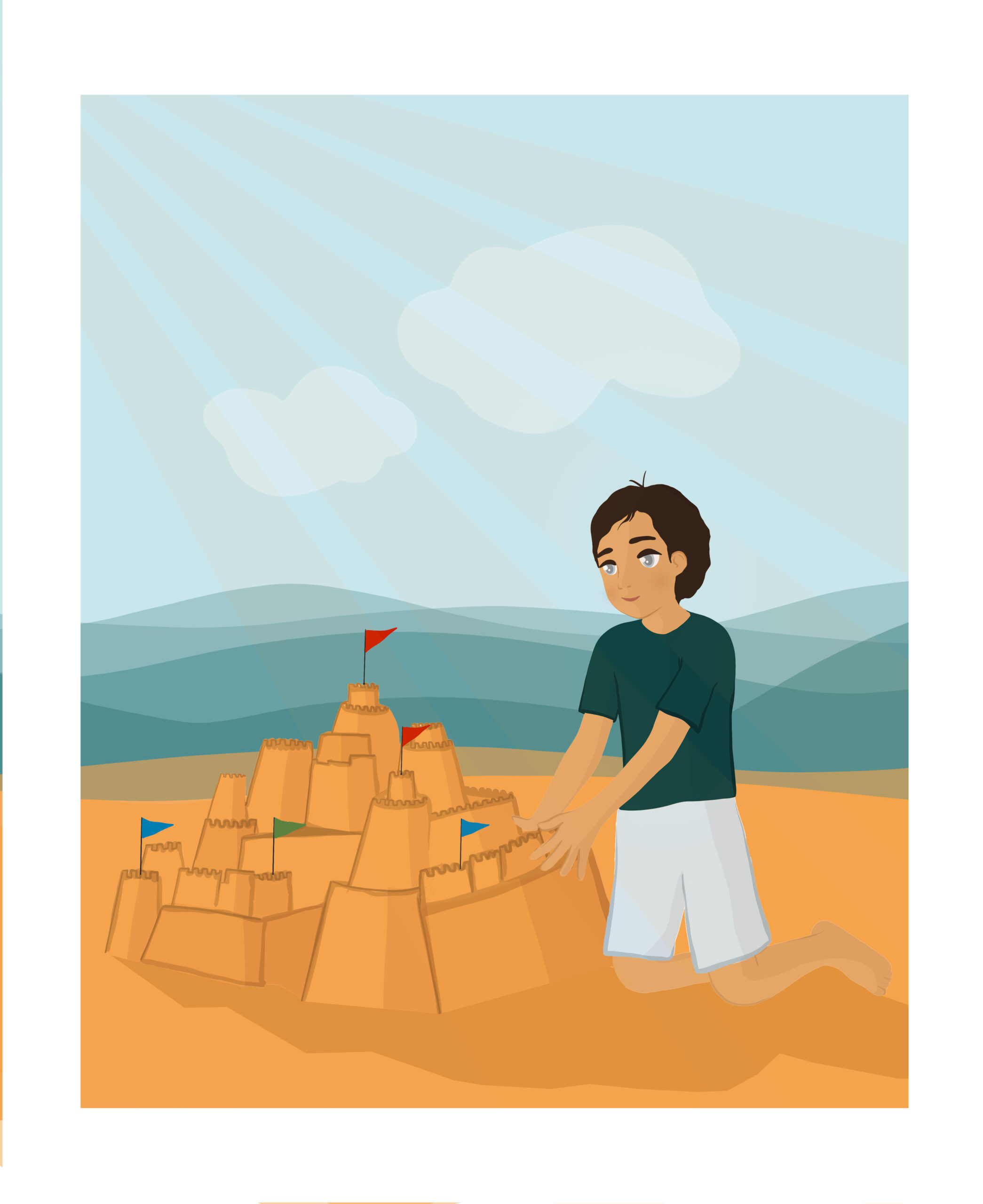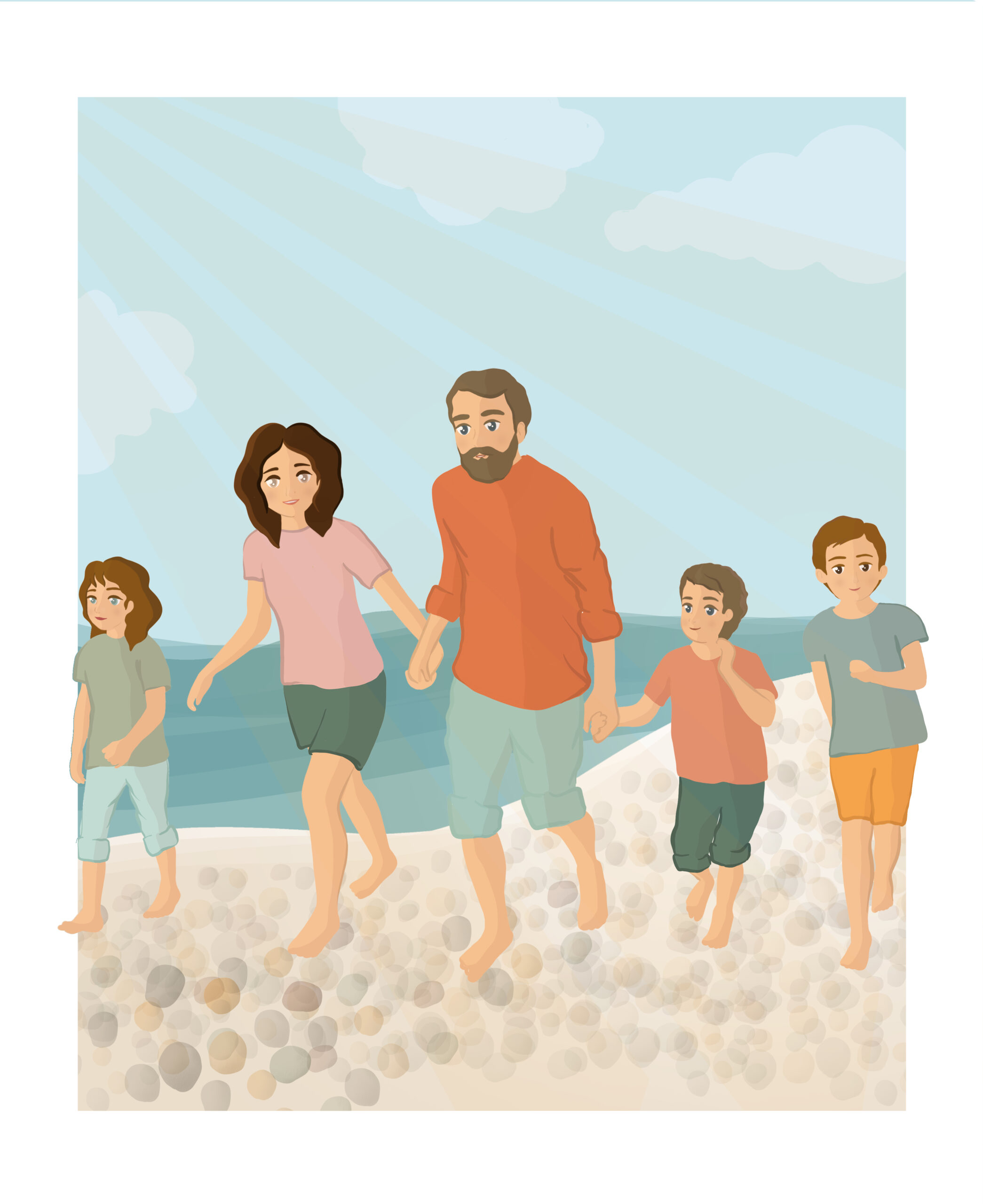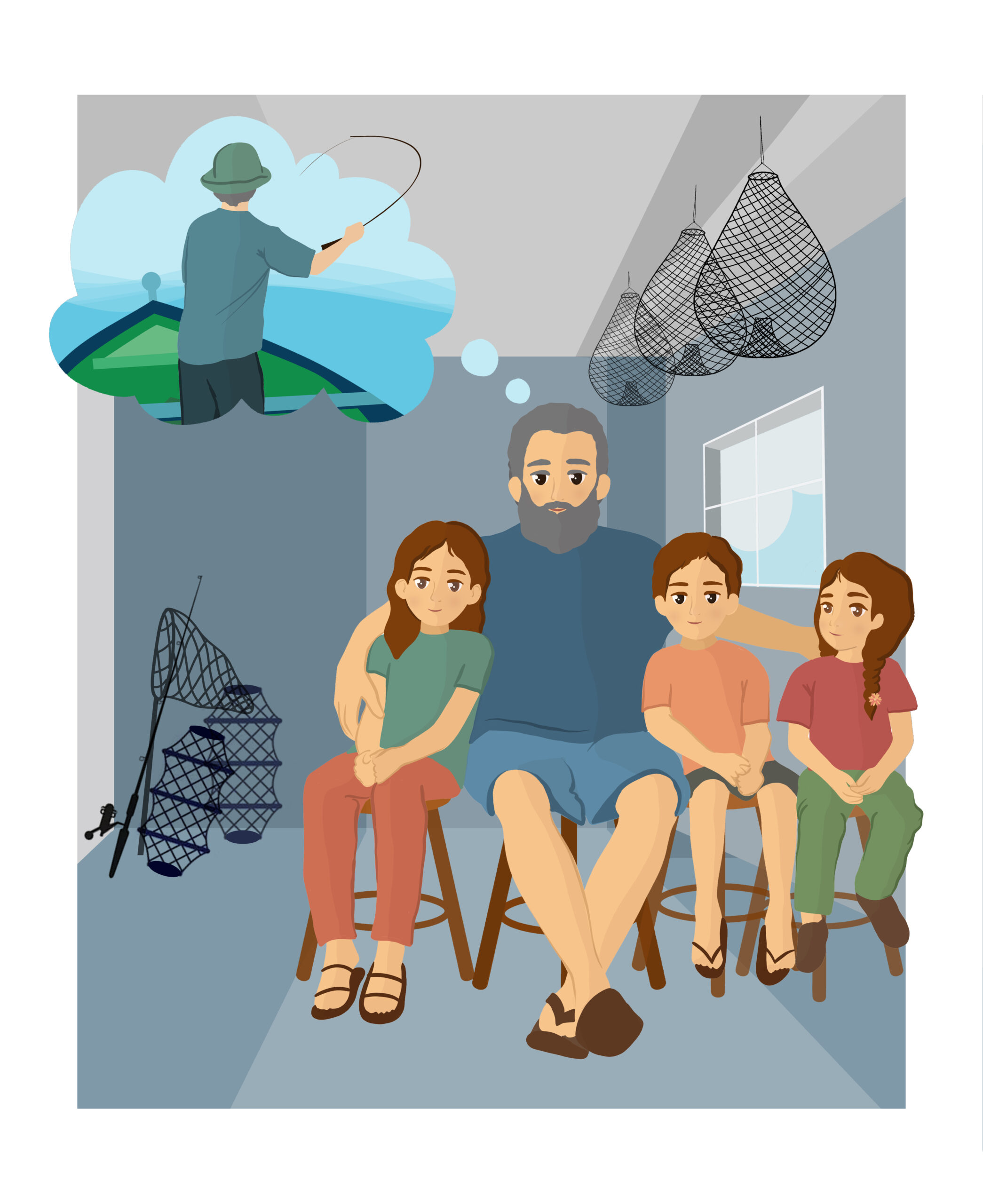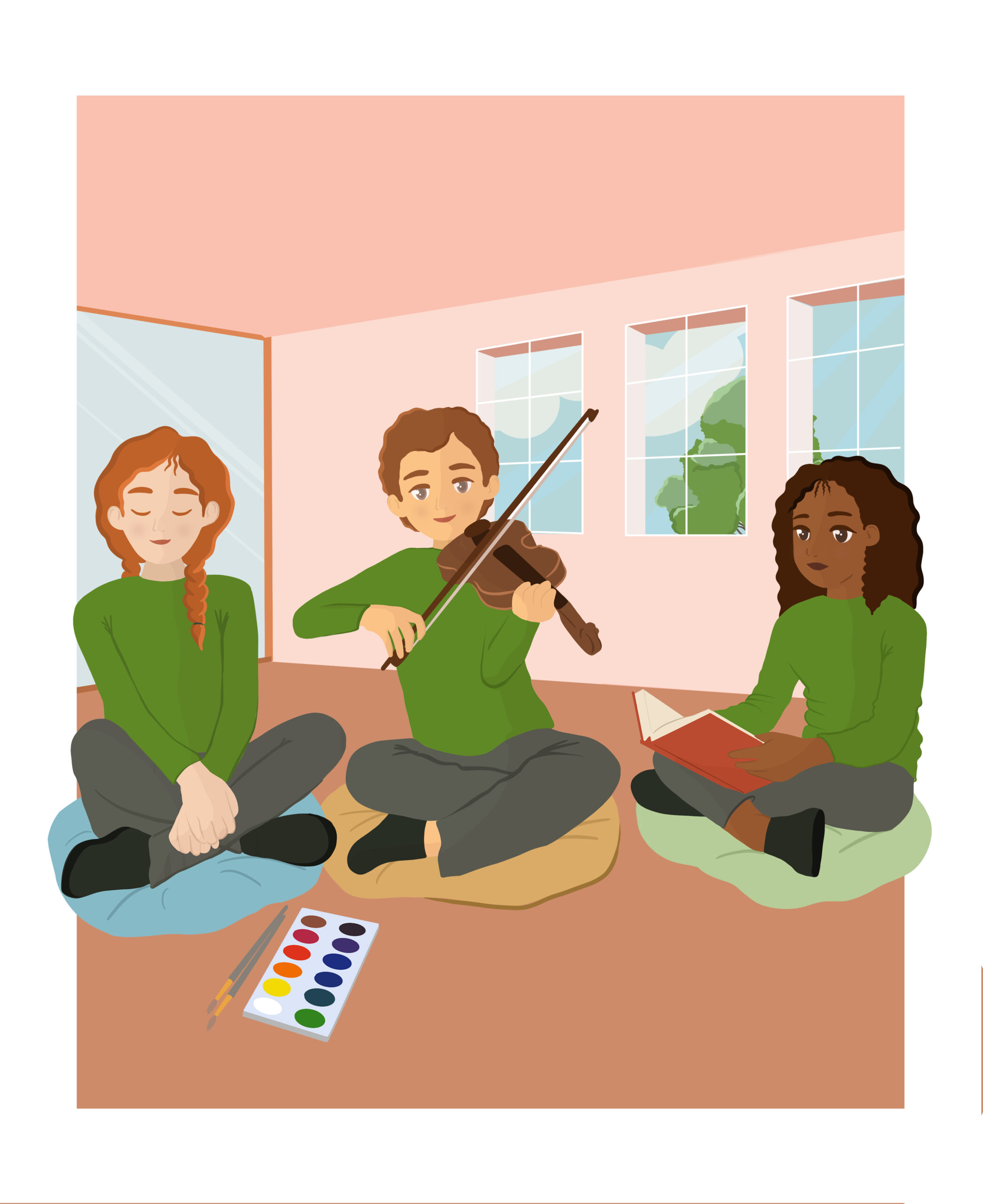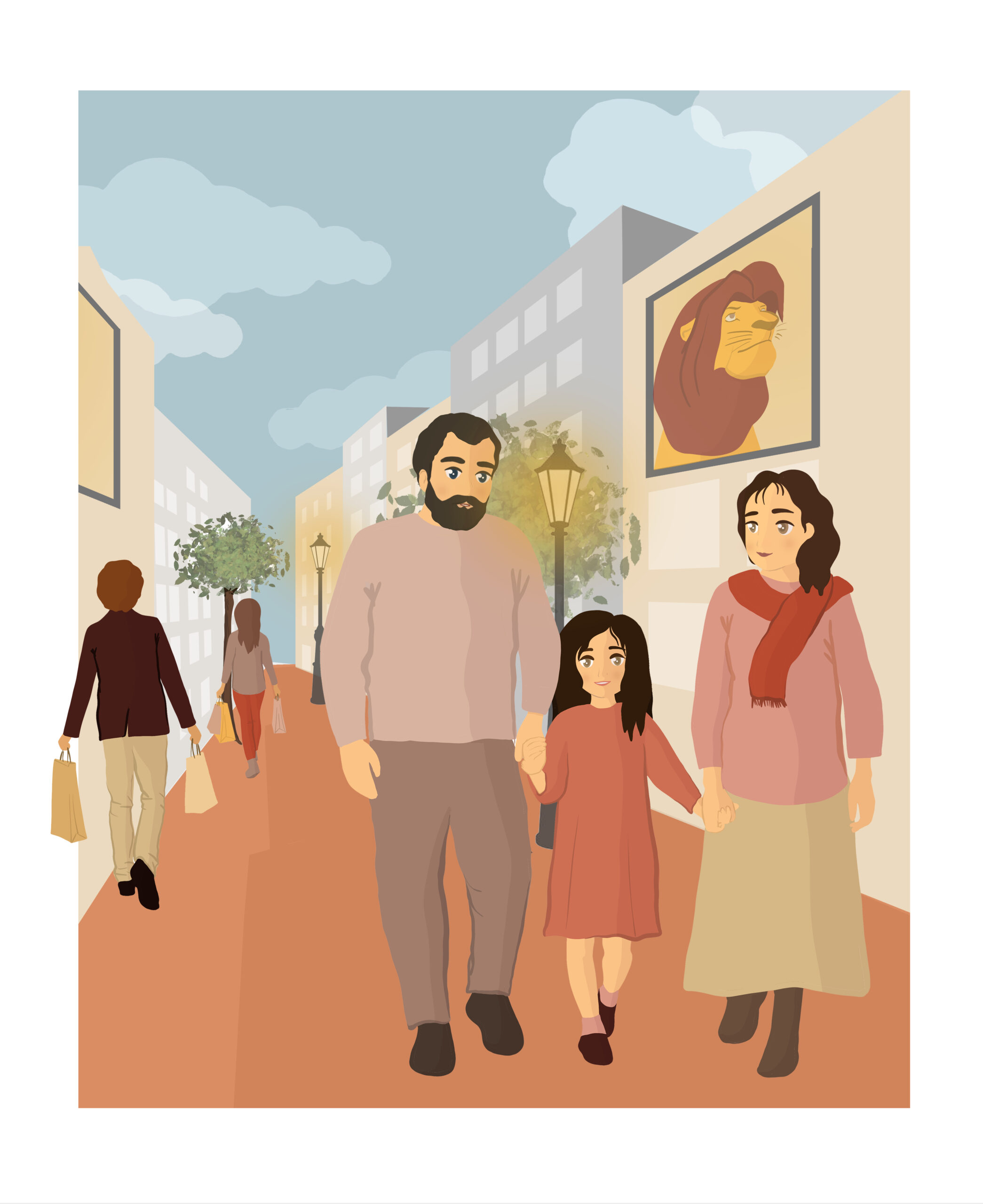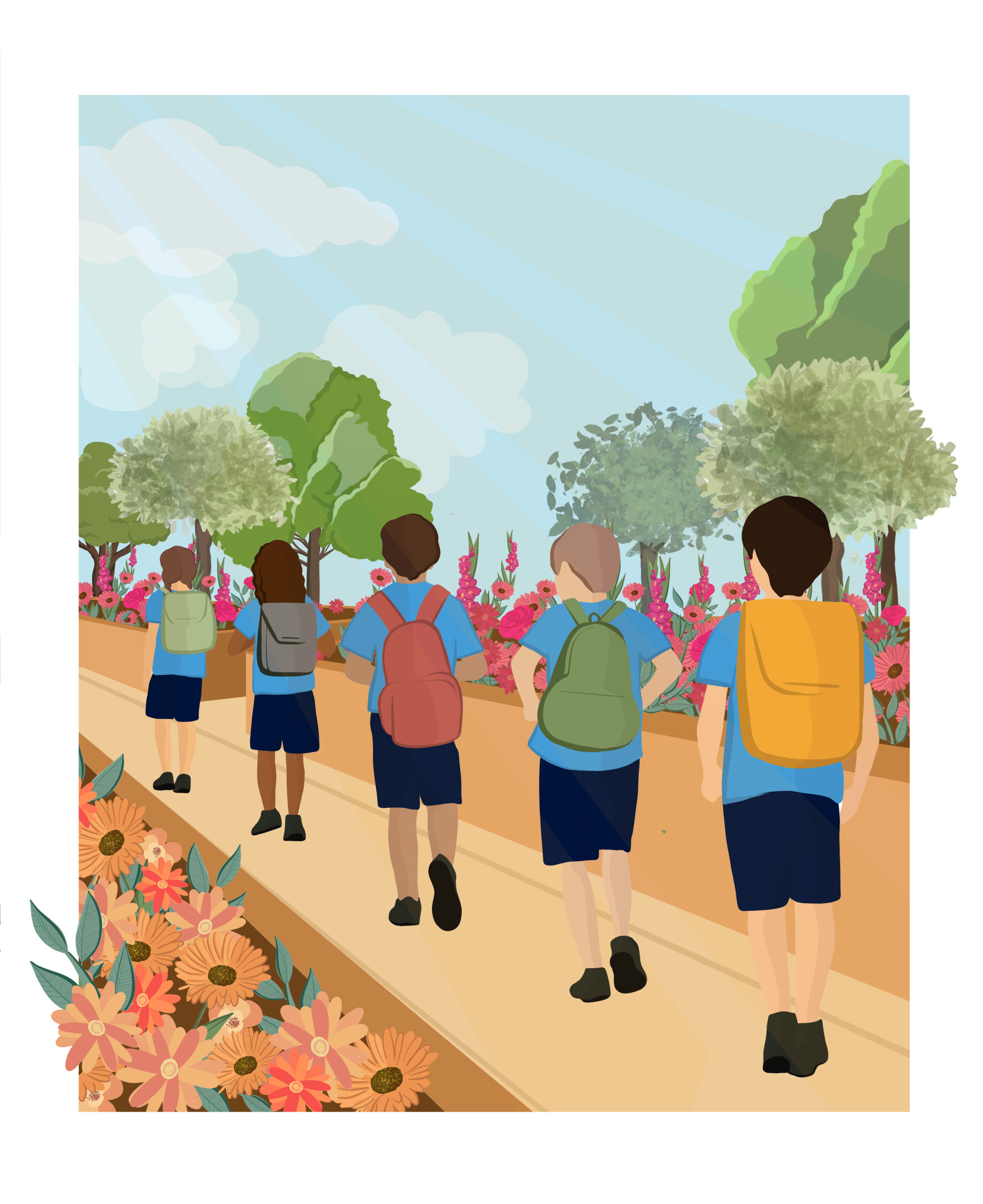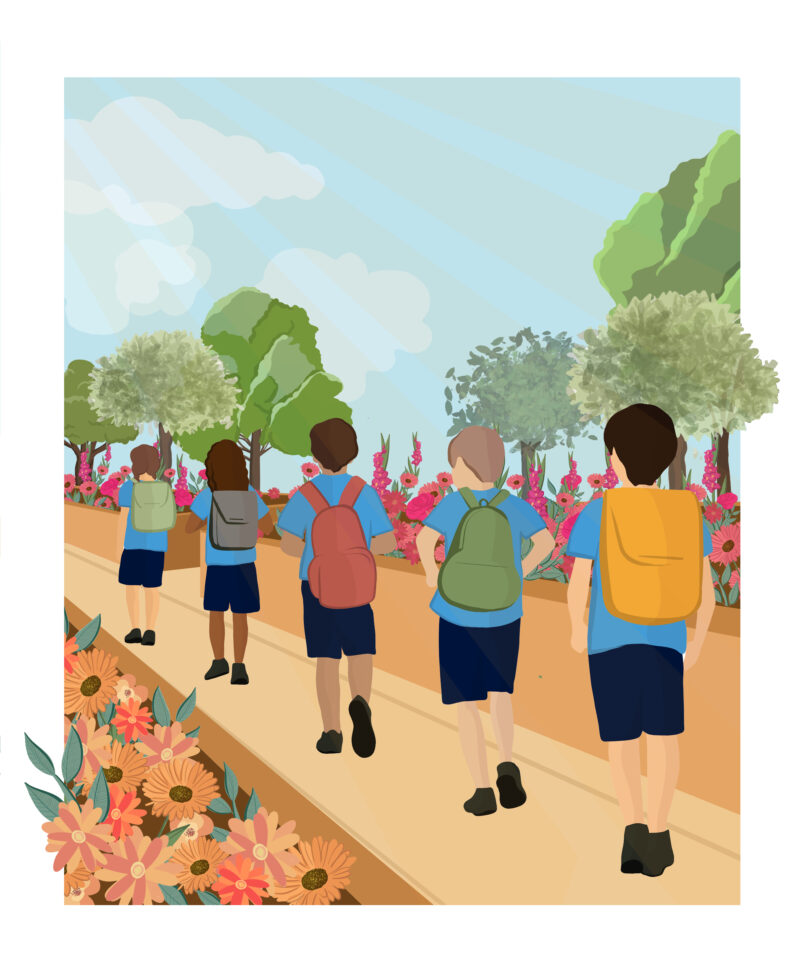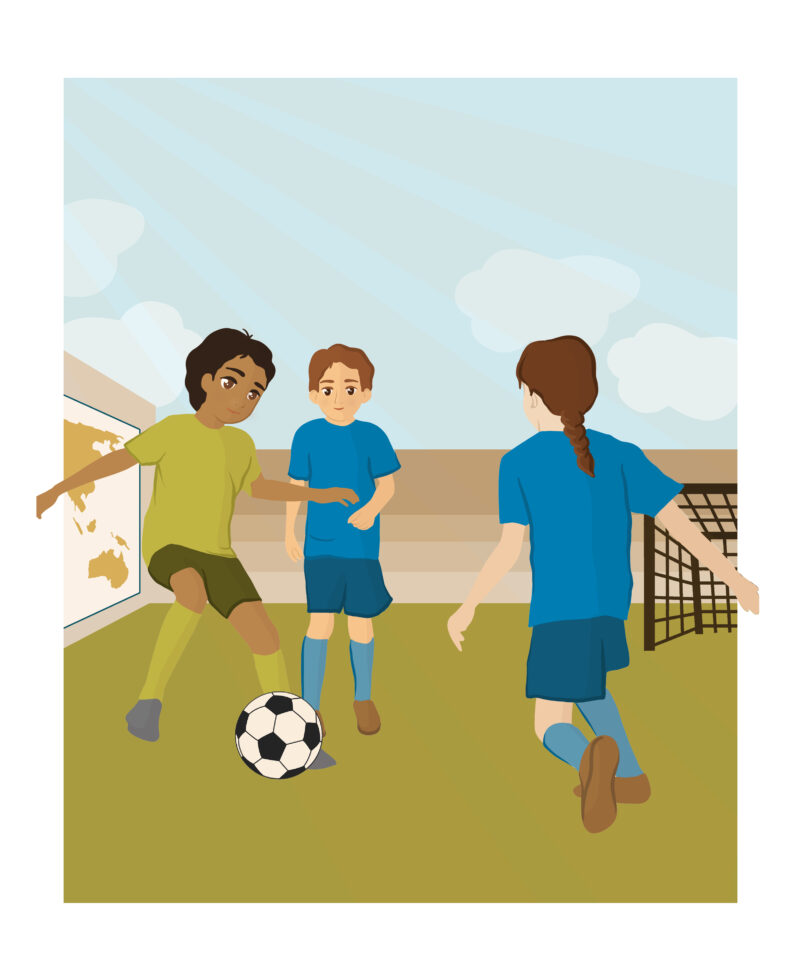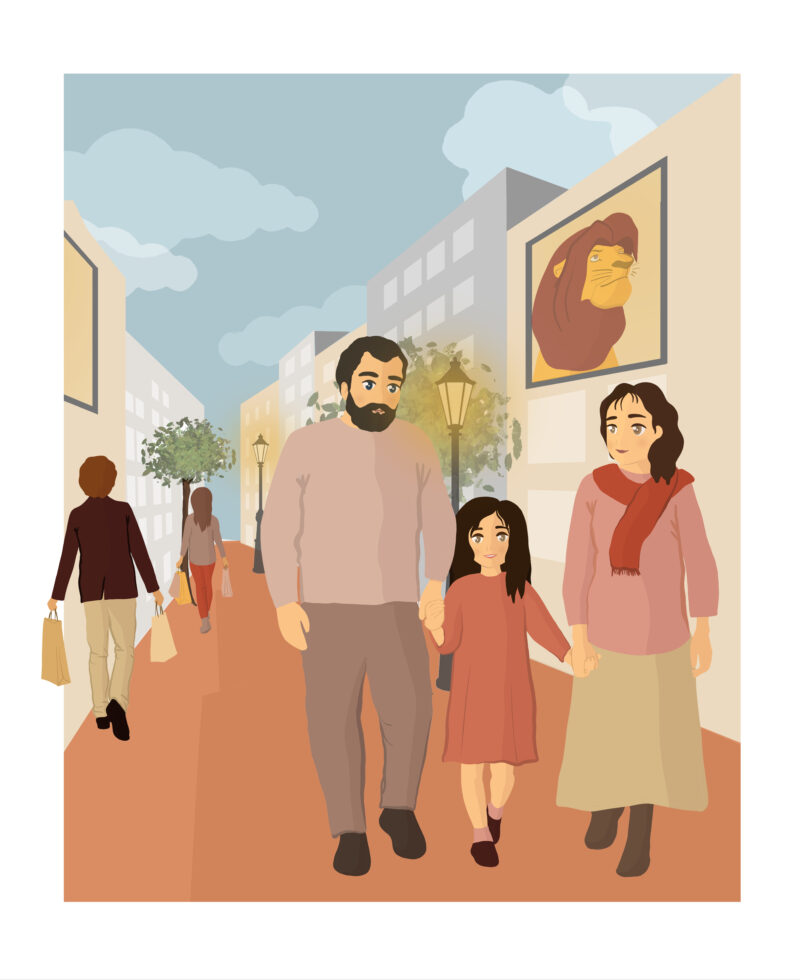The story is about a group of friends who accepted an invitation to participate in a celebration that would take place on World Gratitude Day. Through dance and art, the children expressed their gratitude towards their family, friends, pets, artistic talents, and life.
Ages
- Primary Years
- Middle Years
Topics
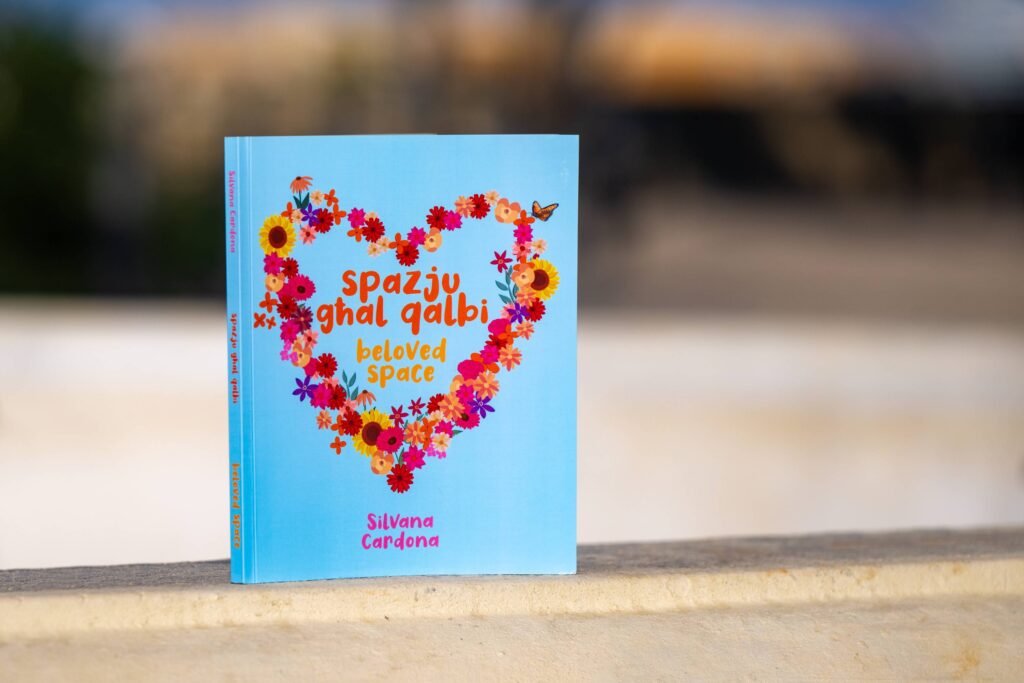
Ngħidu Grazzi
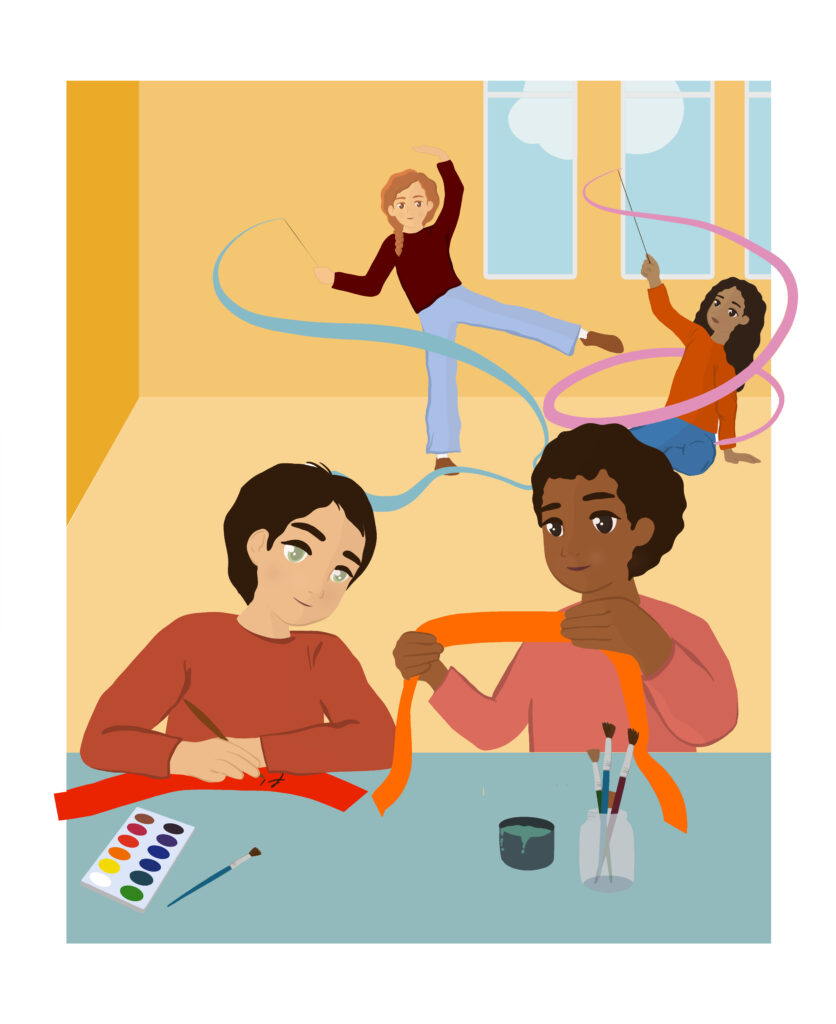
Grupp ta’ ħbieb li jħobbu l-arti u ż-żfin jiltaqgħu flimkien kull nhar ta’ Sibt waranofsinhar biex jitħarrġu f’dawn iż-żewġ passatempi tagħhom. Sibt minnhom it-tfal irċivew invit mingħand l-edukatur tagħhom biex jipparteċipaw f’ċelebrazzjoni li kienet ser tittella’ għall-Jum Dinji tal-Gratitudni, li jaħbat nhar il-21 ta’ Settembru.
Fuq l-invit kien hemm miktub li kien hemm bżonn il-parteċipazzjoni ta’ żewġ gruppi. Grupp li kellu jagħti wirja b’żifna u grupp li jarma wirja b’mudelli kreattivi. It-tema li dwarha kellhom jiżfnu u joħolqu l-mudelli kien jisimha ‘Gratitudni’.
It-tfal laqgħuh b’ħeġġa dan l-invit u immedjatament ħarġu b’ideat sbieħ ta’ x’setgħu jagħmlu. Qabblu bejniethom li ħamsa minnhom kellhom joħolqu żifna biż-żigarelli marbuta ma’ jdejhom.
Il-ħamsa l-oħra kellhom joħolqu mudelli bl-għaġina tal-kulur. Kemm kienu eċitati u ferħana meta l-ideat tagħhom intgħoġbu mill-edukatur tagħhom!
Matul il-ġimgħa ltaqgħu diversi sigħat online biex jippjanaw u jippreparaw x’kellhom bżonn jagħmlu u jixtru. Meta reġgħu ltaqgħu fiżikament is-Sibt ta’ wara, huma ħadu l-affarijiet li ftiehmu dwarhom f’basket. Grupp minnhom fetaħ il-basket u ħareġ biċċiet twal ta’ żigarelli kkuluriti. Il-grupp l-ieħor fetaħ kaxxa u ħareġ pakketti żgħar tal-għaġina tal-kulur.
L-edukatur kellu kurżità kbira jisma’ lit-tfal x’kellhom ippjanat li jagħmlu u wara li qalilhom prosit għall-ideat sbieħ li ħarġu bihom, staqsiehom:
“X’beħsiebkom tagħmlu biż-żigarelli u l-għaġina tal-kulur?”
Tifel minnhom beda jgħidlu x’kellhom f’moħħhom li jagħmlu u qallu, “Waqt li konna niltaqgħu online, ħsibna ħafna dwar il-kelma gratitudni.
Ħsibna dwar il-ħafna affarijiet li aħna lkoll għandna għal xiex ngħidu grazzi fil-ħajja tagħna. Pereżempju semmejna li nistgħu ngħidu grazzi għall-familji tagħna, għall-ġenituri, ħbieb, pets, passatempi, sports, talenti, strumenti mużikali, u l-lista tibqa’ sejra. Għalhekk ħsibna li ħamsa minna niktbu grazzi għal dik il-ħaġa li nixtiequ ngħidu grazzi għaliha fuq żigarella u norbtuha ma’ jdejna waqt li nxejruha mar-ritmu tal-mużika matul iż-żifna tagħna.
“Il-ħamsa l-oħra ħsibna li kull wieħed u waħda minna nagħmlu mudell ikkulurit bl-għaġina tal-kulur għal dak l-oġġett jew persuna li nixtiequ ngħidu grazzi għalih jew għaliha.”
“Isa ħej, kemm intom kreattivi!” qalilhom l-edukatur taż-żfin. “Mela tridux tibdew tippreparaw iż-żigarelli u l-mudelli bl-għaġina tal-kulur biex imbagħad nagħmlu l-provi tagħhom?” kompla jistaqsihom.
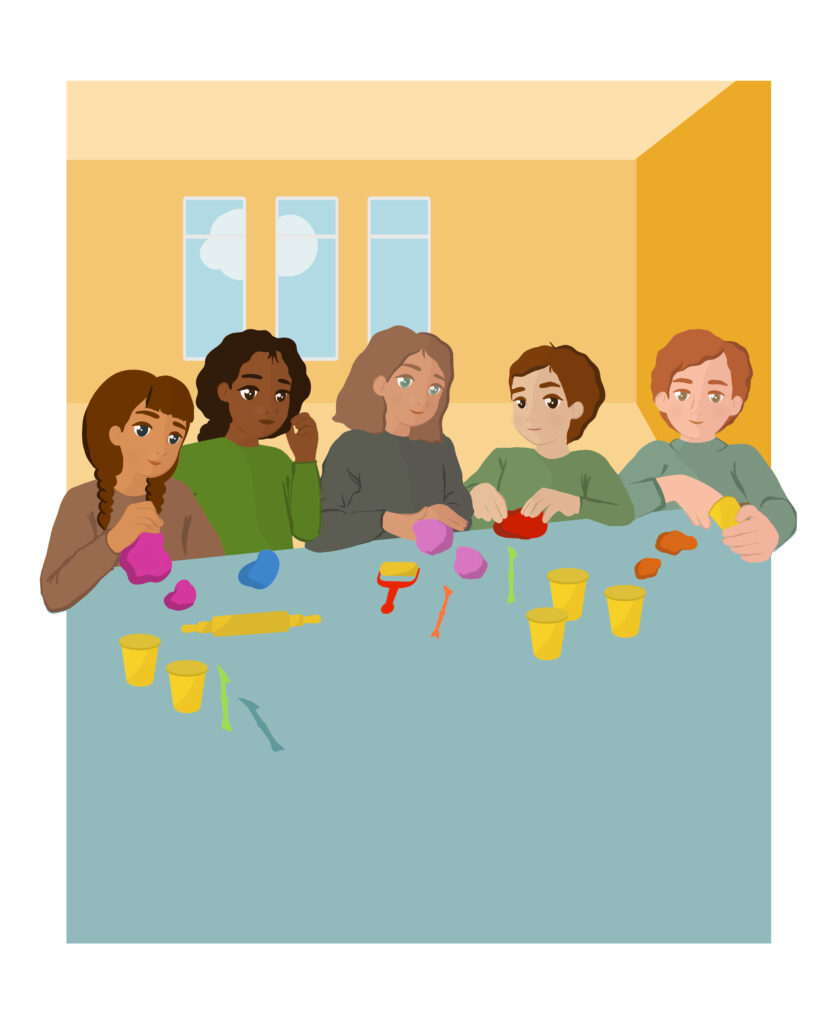
It-tfal b’entużjazmu fuqhom resqu jieħdu ż-żigarelli jew l-għaġina tal-kulur skont kif kienu ftiehmu, daru mal-mejda kbira u bdew jiktbu grazzi fuq iż-żigarelli u jagħmlu l-mudelli.
Kif lestew, b’eċitament kbir fuqhom bdew il-provi tagħhom. Il-grupp taż-żfin beda jitgħallem il-passi taż-żifna waqt li jisma’ l-mużika ritmika. Il-grupp l-ieħor ra kif se jarma l-mudelli li ħolqu fuq mejda apposta. Waqt li ħallew il-mużika baxxa, xtaqu jaqsmu flimkien dak li kienu għamlu.
L-ewwel beda l-grupp li għamel il-forom bl-għaġina tal-kulur u beda Paul. “Araw, jien għamilt forma ta’ widna biex permezz tagħha ngħid grazzi lill-ħbieb tiegħi li jisimgħuni b’attenzjoni meta jkolli bżonn niftaħ qalbi u nitkellem ma’ xi ħadd.”
Kathleen għamlet forma ta’ kitarra kannella u qalet grazzi lil Alla għat-talent li għandha tal-mużika u l-kant.
Peress li jħobb ipitter, Fabio għamel forma ta’ palette u pinzell. Qal grazzi lil Alla ta’ dan it-talent għax bit-tpinġija tiegħu, iferraħ tfal morda l-isptar.
Christine għamlet forma ta’ qasrija b’għaġina griża. Qalet grazzi lil Alla talli hi kapaċi tifforma qsari, vażuni, u fjuri bit-tafal. Meta tbigħhom, bil-flus tagħhom tixtri ikel lill-familji fil-bżonn.
Bl-għaġina tal-kulur, Silvana għażlet iċ-ċelesti, u għamlet forma ta’ ktieb għax tħobb tikteb l-istejjer u toqgħod taqrahom lil ħuha ż-żgħir qabel jorqod. Qalet grazzi lil Alla għal dan it-talent.
Issa kien imiss il-grupp l-ieħor jaqsam x’għamel u x’kiteb fuq iż-żigarelli.
Fuq żigarelli sofor, Annabelle kitbet għalliema, u rringrazzjat lil Alla għall-għalliema kollha li jgħallmuha. Talbitu jgħinha tistudja biex la tikber issir għalliema hi wkoll.
Bernardette kellha tliet żigarelli bojod u fuqhom kitbet ommi, missieri u ħuti. Qalet grazzi tal-imħabba li juruha, tal-paċenzja u s-sagrifiċċji li jagħmlu speċjalment nhar ta’ Sibt biex iwassluha ż-żfin.
Charlotte kitbet komunikazzjoni fuq żigarella roża u qalet grazzi talli tikkomunika tajjeb ma’ tfal daqsha li għandhom bżonnijiet speċjali. Irringrazzjat lil Alla talli huma jħobbuha ħafna wkoll.
Joseph ħa ftit żigarelli turquoise u għamel kullana mmaljata. Huwa kiteb il-kelma ‘ħjata’ u qal grazzi lil Alla tat-talent li jaf iħit.
Nancy għażlet kuluri differenti ta’ żigarelli. Bihom għamlet ħafna fjuri biex jilbsuhom sħabha waqt iż-żifna. Qalet grazzi lil Alla talli taf tagħmel ħafna krafts u tferraħ lit-tfal bihom.
Kemm ħadu gost jisimgħu lil xulxin dawn l-għaxart itfal! Imbagħad Reuben, l-edukatur tagħhom, qalilhom, “Agħtuni ż-żigarelli u l-għaġina tal-kulur li fadlilkom ħalli jien ukoll noħloq xi ħaġa u ningħaqad magħkom biex ngħid grazzi.”
Malajr malajr, għamel siġra ħadra bl-għaġina tal-kulur u għamel forma ta’ farfett biż-żigarella. “Jien irrid ngħid grazzi tan-natura sabiħa u tal-mixjiet li nagħmel mal-ħbieb fil-kampanja.”
Issa, Reuben u t-tfal kollha kellhom seba’ mitt sena biex tasal il-ġurnata taċ-ċelebrazzjoni biex jiżfnu u juru l-mudelli tagħhom dakinhar tal-Jum Dinji tal-Gratitudni.
Every Saturday afternoon, a group of friends who love art and dance come together to practice these two hobbies. One Saturday, the children received an invitation from their educator to participate in a celebration that would take place on World Gratitude Day on September 21.
The invitation stated that the participation of two groups was required. One group had to come up with a dance and another group had to set up an exhibition with creative models. The theme on which they had to dance and create the models was called ‘Gratitude’.
The children eagerly accepted the invitation and immediately came up with some great ideas. They agreed that five of them had to create a ribbon dance. The other five had to create models with play dough. They felt so excited and thrilled when their educator liked their ideas.
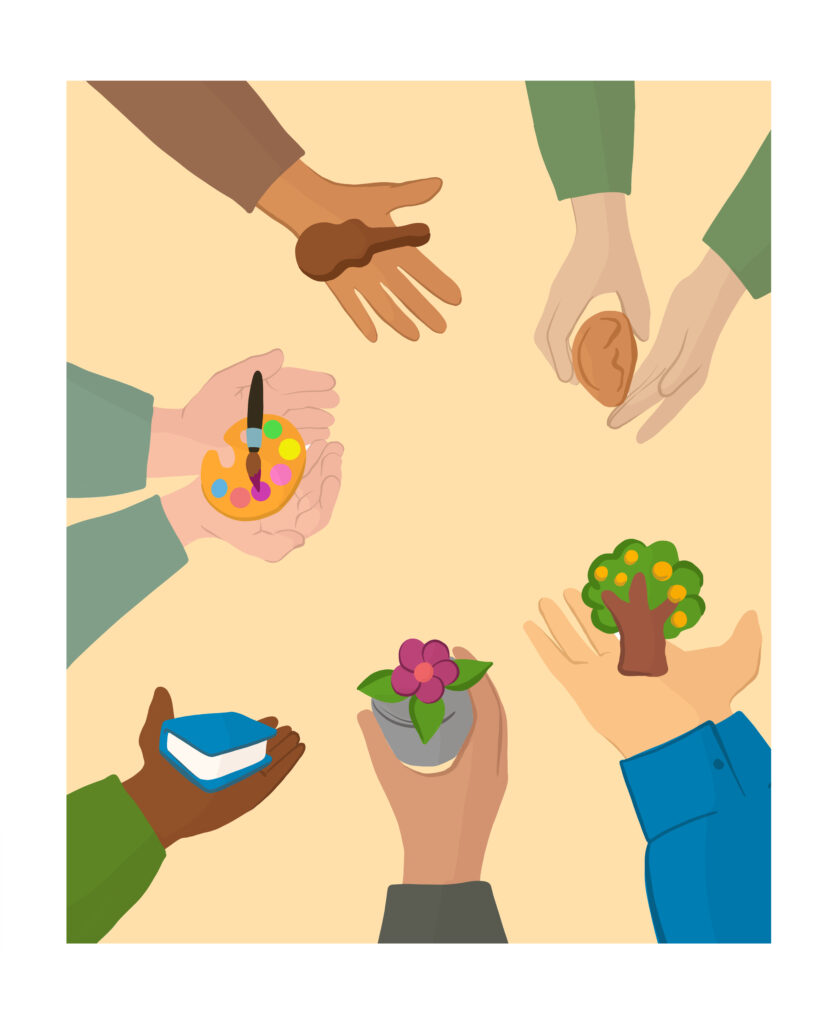
During the week they met online for several hours to plan and prepare what they needed to do and buy. When they met again physically the following Saturday, they took the things they had agreed on in a bag. One of the groups opened the bag and pulled out long pieces of coloured ribbons. The other group opened a box and pulled out small, coloured packets of play dough.
The educator was very curious to hear what the children had planned to do and after congratulating them on the good ideas they had come up with, he asked them,“What are you going to do with the ribbons and the play dough?”
One boy explained to him what they had in mind: “While we were meeting online, we thought a lot about the word gratitude. We thought about the many things we all have to say thank you for in our lives. For example, we mentioned that we can say thank you to our families, parents, friends, pets, hobbies, sports, talents, musical instruments and the list goes on.
“So we thought that five of us would write the word ‘thanks’ on the ribbons, for those things or people we are grateful for. Then we will tie the ribbons to our hands while performing the ribbon dance.
“ The other five children thought of creating a model from the coloured play dough. This model is to represent an object or a person that we are grateful for.”
“Wow, how creative you are!” exclaimed the dance educator, and continued to ask them: “Would you like to start preparing the ribbons, the play dough models, and then do some rehearsals too?”
The children enthusiastically moved around a big table. Some of them took the ribbons and began to write the word ‘thanks’ on them, while some others took the play dough and began to create models.
When they finished, they moved on happily to rehearsing. The dance group began to learn the dance steps as they listened to rhythmic music. The other group thought of possible ways to display their playdough models on the table.
While listening to soft music, the children wanted to share their work with each other. The first who started to share was Paul, a boy from the group who created models with play dough. Paul said: “Look, I made an ear shape to thank my friends for listening to me when I need to open my heart and talk to someone.”
Kathleen made a brown guitar shape and thanked God for her talent in music and singing.
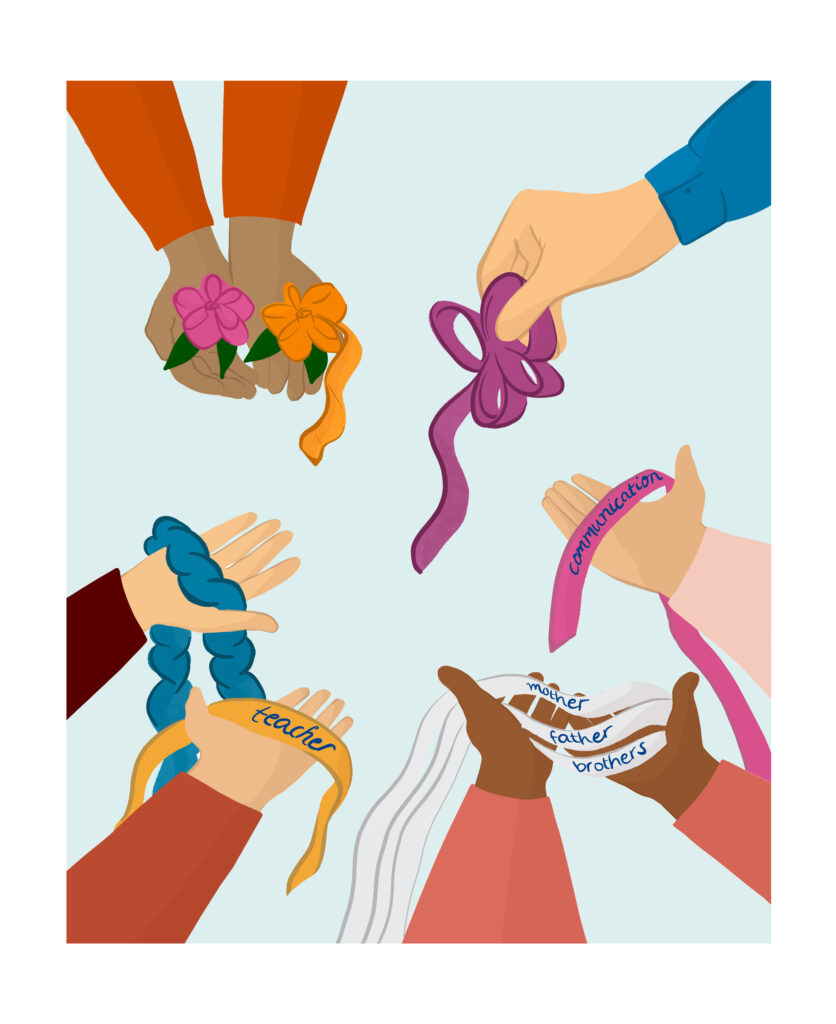
Fabio, who likes to paint a lot, made a palette and a brush shape. He thanked God for this talent, as with his drawings he cheers up sick children in hospital.
Christine made a pot shape out of grey play dough. She thanked God for being able to form pots, vases, and flowers with clay. She then sells them and with the money, she buys food for families in need. With the play dough, Silvana chose the blue one to make a book shape because she likes to write stories and read them to her little brother before going to sleep. She thanked God for this talent.
Now it was the other group’s turn to share what they did and wrote on the ribbons.
On yellow ribbons, Annabelle wrote the word ‘teacher’, and thanked God for all the teachers who taught her. She also asked God to help her further her studies so that when she grows up, she would also become a teacher.
Bernardette had three white ribbons and on them she wrote the words ‘mother’, ‘father’ and ‘brothers’. She thanked them for the love they show her, for the patience and sacrifice they make for her especially on Saturdays when they drive her for dancing lessons. Charlotte wrote the word ‘communication’ on a pink ribbon and said thank you to God for giving her the skill of communicating well with children who have special needs and for loving them so much.
Joseph took some turquoise ribbons and made a braided necklace. He wrote the word ‘sewing’ and thanked God for his talent to sew.
Nancy took various colours of ribbons and created many flowers to be worn by her peers during the ribbon dance. She thanked God for knowing how to do crafts and for cheering other children with the crafts she makes.
The ten children enjoyed themselves very much listening to and sharing with each other.
Then Reuben, the dance educator, told them: “Give me the remaining ribbons and play dough so I will join you in saying thank you on the ribbons and create a shape with playdough.”
Quickly, he made a tree shape with the green play dough and made a butterfly shape with the ribbons and said, “I want to say thank you for the beautiful nature around us and for when I go for walks with friends in the countryside.”
Now, Reuben and all the children were looking forward to the celebration on World Gratitude Day, when they were going to perform the ribbon dance and exhibit their models.
Dire grazie

Ogni pomeriggio di domenica, un gruppo di amici che amano l’arte e il ballo, s’incontrano per praticare questi due passatempi. Un sabato, i ragazzi ricevettero un invito dal loro educatore a partecipare a una cerimonia che avrebbe avuto luogo nella Giornata mondiale di gratitudine il 21 settembre.
L’invito indicava che era richiesta la partecipazione di due gruppi: uno doveva preparare un ballo e un altro doveva allestire una mostra con modelli creativi. Il tema proposto per il ballo e per i modelli era chiamato ‘Gratitudine’.
I ragazzi accettarono l’invito con vivo interesse e in un batter d’occhio vennero loro in mente idee geniali. Si misero d’accordo sul da farsi: cinque di loro avrebbero creato un ballo a nastro, mentre gli altri cinque avrebbero costruito modelli con plastilina. Sapere poi che all’educatore fossero piaciute le loro idee li fece fremere di piacere.
Durante la settimana s’incontravano online per diverse ore pianificando e preparando cosa necessitava loro di fare e di comprare. Incontratisi di nuovo fisicamente sabato seguente, portarono in una borsa le cose su cui s’erano messi d’accordo. Uno dei gruppi aprì la borsa e ne estrasse lunghi pezzi di nastri colorati. L’altro gruppo aprì una scatola e ne cavò dei sacchettini colorati di plastiline.

L’educatore, ansioso di sentire che cosa avessero pianificato di fare, appena si fu congratulato con loro per il progetto ingegnoso escogitato, chiese loro, ″Che cosa farete con i nastri e la plastilina?”
Uno dei ragazzi gli spiegò che cosa avevano in mente: “Mentre ci riunivamo online, meditavamo parecchio sulla parola gratitudine. Riflettevamo sulle molte cose per cui dobbiamo dire grazie nella nostra vita. Per esempio, ricordavamo che possiamo dire grazie a: nostre famiglie, genitori, amici, animali domestici, passatempi, sport, talenti, strumenti musicali, e via discorrendo.
“Così pensavamo che cinque di noi scrivessimo la parole’grazie’ sui nastri, per quelle cose o persone a cui siamo grati. Poi allacceremo i nastri alle nostre mani mentre eseguiremo il ballo a nastro.
“ Agli altri cinque ragazzi venne l’idea di creare un modello dalla plastilina colorata. Questo modello serve per rappresentare un oggetto o una persona a cui siamo grati.”
“Perbacco, quanto creativi siete!” esclamò l’educatore di ballo, il quale seguitò a chiedere loro: “Vi piacerebbe cominciare a preparare i nastri, i modelli di plastilina, e poi fare anche le prove?”
I ragazzi, pieni di entusiasmo, girarono attorno a un tavolone. Alcuni presero i nastri e si misero a scrivere la parola ‘grazie’ su di essi, mentre alcuni altri afferrarono la plastilina creandone dei modelli.
Finita questa attività, passarono lietamente ad assistere alle prove. Il gruppo di ballo si mise a imparare i passi da ballo ascoltando la musica ritmica. L’altro gruppo escogitava i modi diversi di esibire i modelli di plastilina sulla tavola.
Ascoltando musica sommessa, i ragazzi volevano condividere il frutto del loro lavoro fra di loro. Il primo che si mise a far partecipi gli altri era Paolo,, un ragazzo del gruppo che aveva creato modelli di plastilina. Paolo disse: “Guardate, ho fatto una forma di orecchio per ringraziare i miei amici che mi ascoltano quando ho bisogno di aprire il mio cuore e parlare con qualcuno.”
Kathleen fece un modello a forma di chitarra color marrone e ringraziò Dio per il suo talento per la musica e per il canto.

Fabio, a cui piace dipingere assai, fece un modello a forma di tavolozza e di pennello. Ringraziò Dio per questo talento, poiché con i suoi disegni rincuora ragazzi ammalati in ospedale.
Christine fece un modello di vaso da plastilina grigia. Ringraziò Dio per la sua capacità di plasmare con l’argilla vasi e vasetti da fiori. Lei li vende e con il denaro compra cibo per le famiglie bisognose. Con la plastilina, Silvana scelse l’azzurra per farne un modello di libro perché le piace scrivere storie che poi legge al suo fratellino prima che si addormenti. Ringraziava Dio per questo talento.
Allora toccava all’altro gruppo di far partecipe l’altro di quello che aveva fatto e scritto sui nastri.
Su nastri gialli, Annabelle scrisse la parola ‘insegnante’, e ringraziò Dio per tutti gli insegnanti che aveva avuto. Lei pregò Dio di aiutarla a perseguire i suoi studi per diventare, da grande, un’insegnante.
Bernardette aveva tre nastri bianchi e su di essi scrsse le parole ‘madre’, ‘padre’ e ‘fratelli’. Li ringraziava per l’amore che le dimostrano, per i sacrifici che con pazienza fanno specialmente di sabato quando la portano per lezioni di danza. Charlotte scrisse la parola ‘comunicazione’ su un nastro rosa e disse ‘grazie’ a Dio per averle dato il talento di comunicare bene con i ragazzi che hanno bisogni speciali e per amarli così tanto.
Joseph prese alcuni nastri color turchese e ne fece una collana intrecciata. Scrisse la parola ‘cucire’ e ringraziò Dio per la sua attitudine per il cucito.
Nancy prese nastri di colori diversi e ne creò molti fiori dafar indossare dai suoi coetanei durante il ballo dei nastri. Ringraziò Dio per la sua predisposizione per la creazione di manufatti, e per la capacità di allegrare altri ragazzi con oggetti fatti a mano.
I dieci ragazzi si divertirono parecchio ad ascoltarsi vicendevolmente e scambiarsi i talenti.
Poi Reuben, l’educatore di ballo, disse loro: “Datemi i rimanenti nastri e plastilina, così posso raggiungervi e dirvi grazie sui nastri e creare un modello con la plastilina.”
Rapidamente, lui fece una forma di albero con la plastilina verde , e fece una forma di farfalle con i nastri, e disse, “Voglio dire grazie per la bella natura attorno a noi, e per quando faccio scampagnate con i miei amici.”
Allora, Reuben e tutti i ragazzi non vedevano l’ora di celebrare la Giornata mondiale della gratitudine quando avrebbero eseguito il ballo da nastro ed avrebbero esibito i loro modelli.
Resources related to this story
We want to get to know you. To be able to bookmark your favourite content, please log in or sign up below.
User Sign Up
Discover more resources


